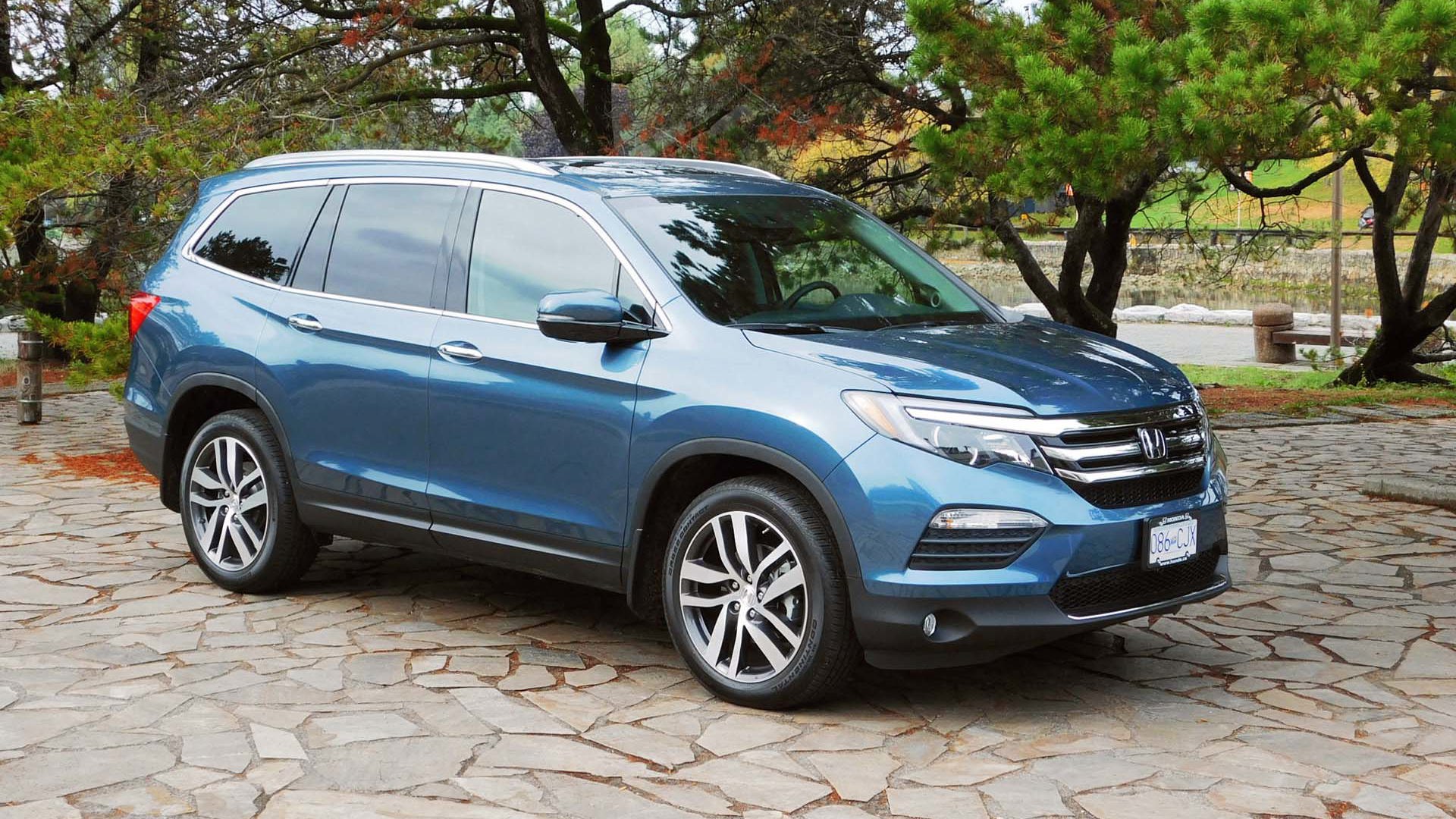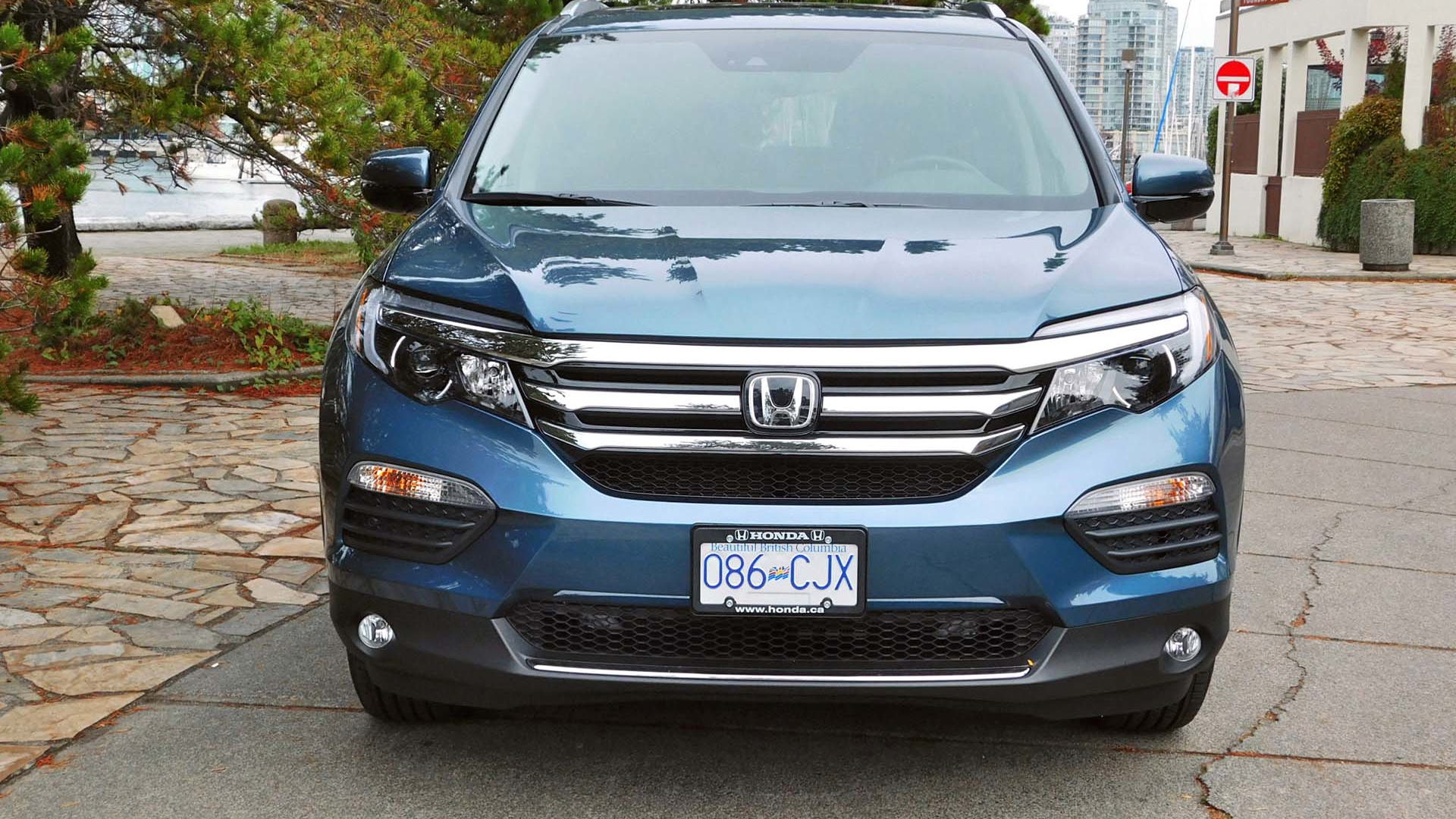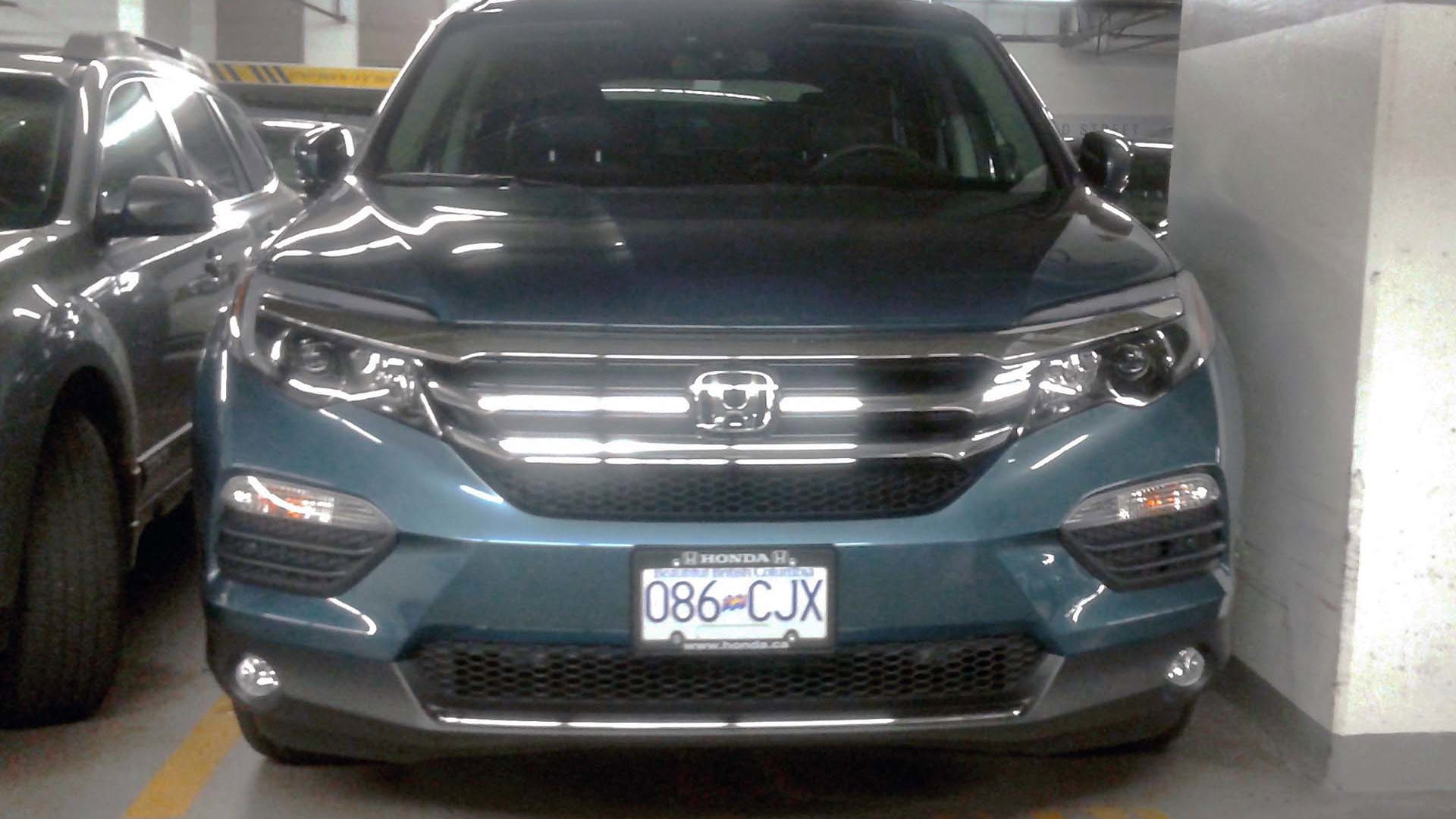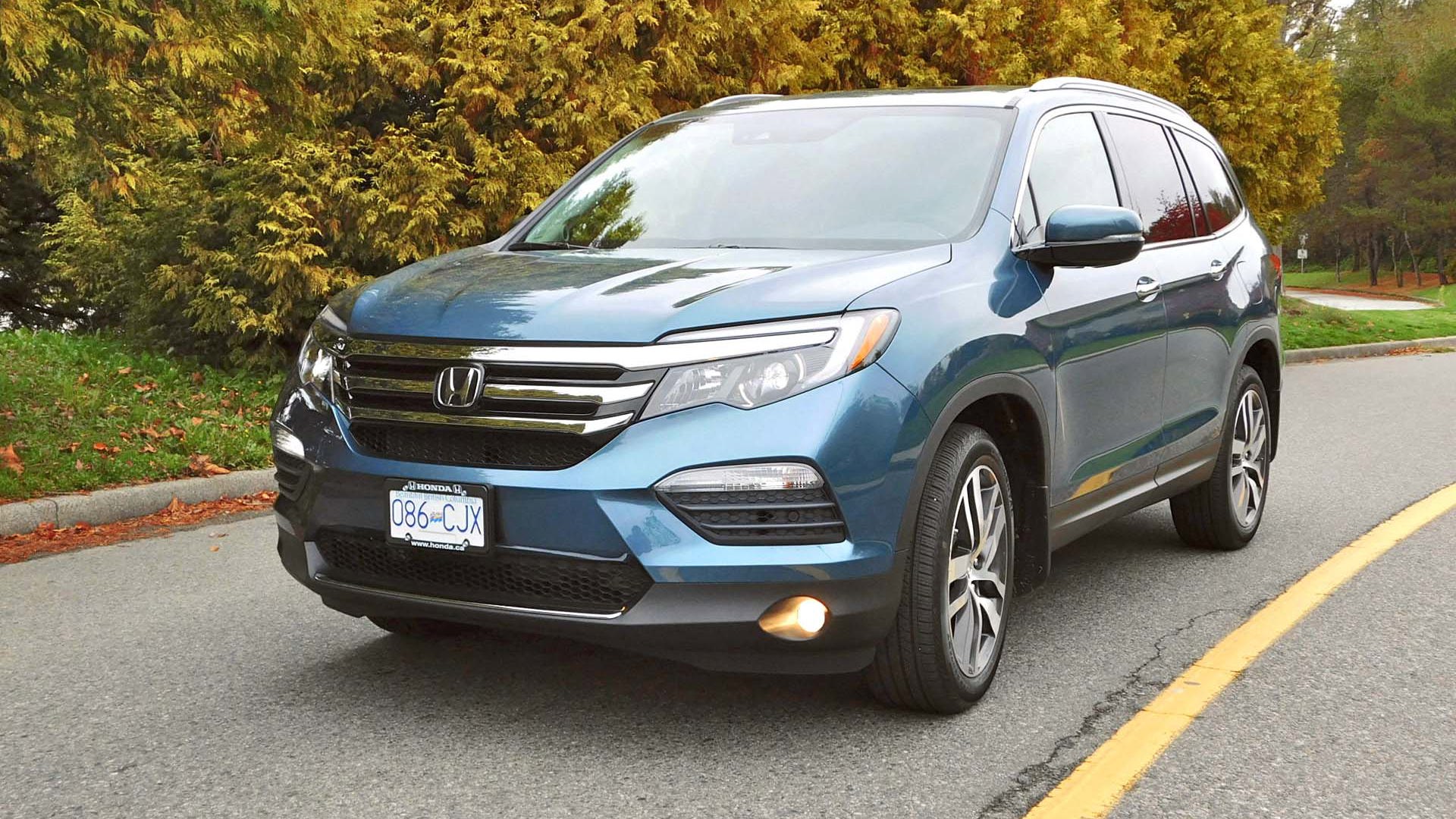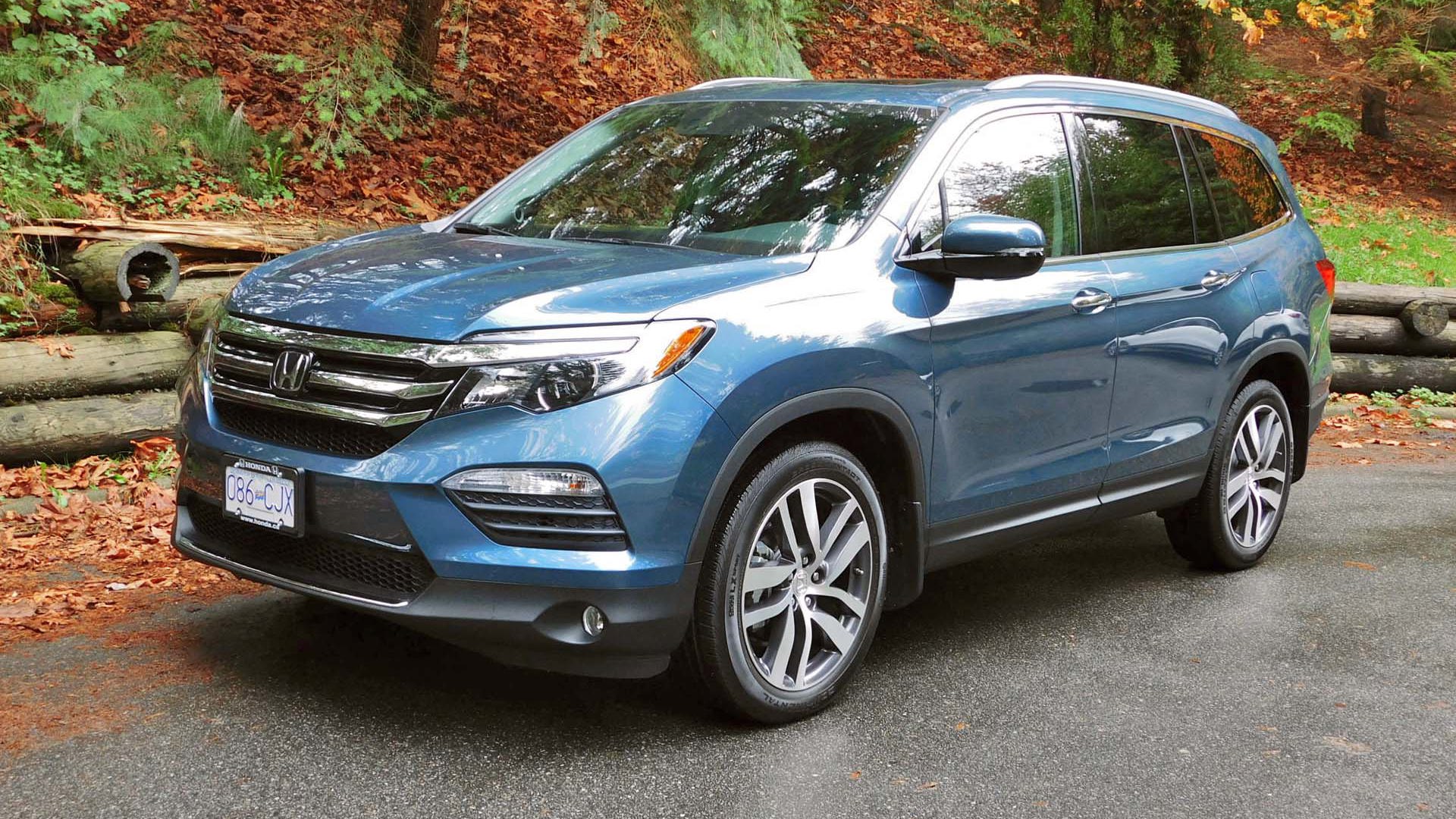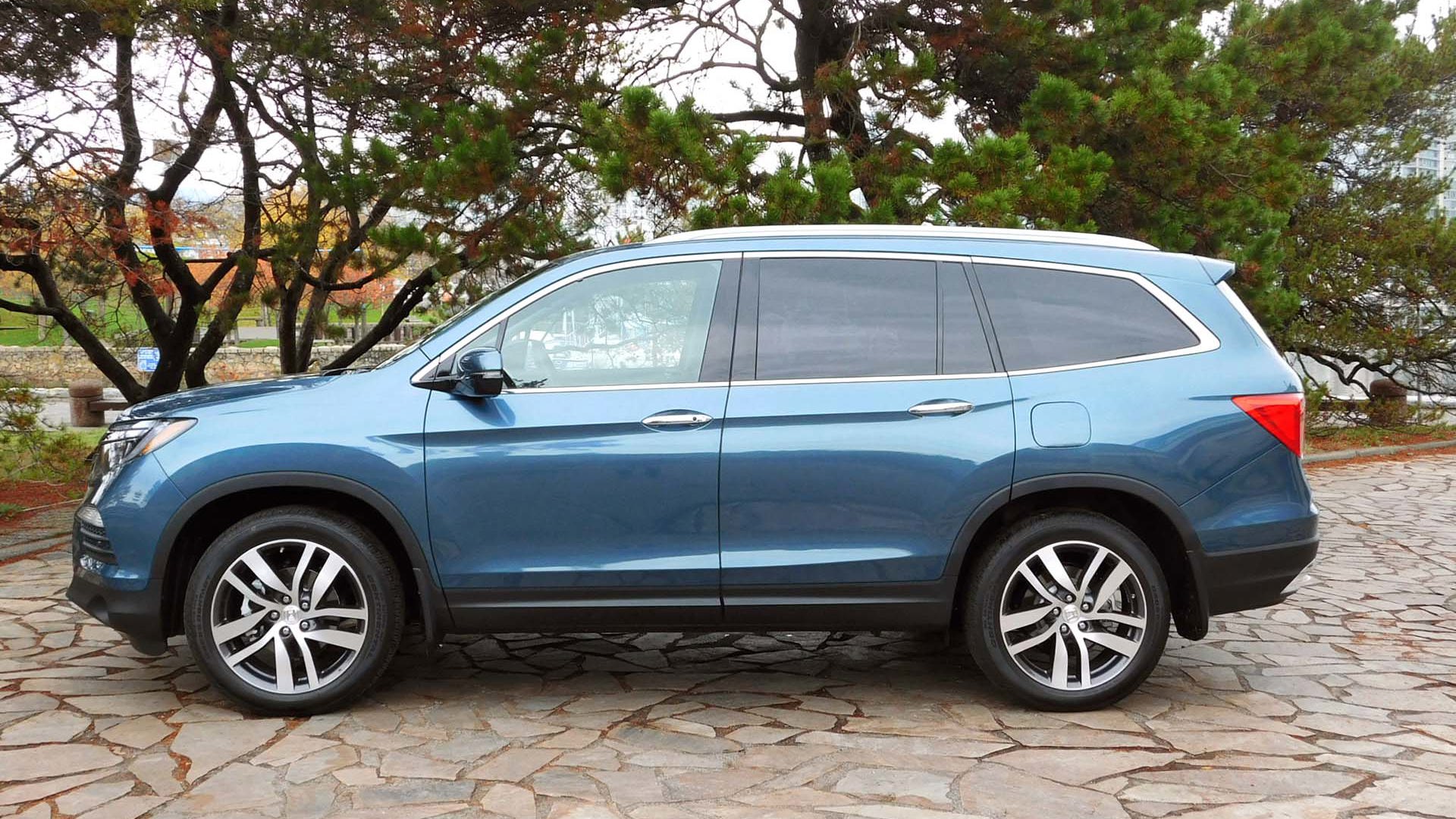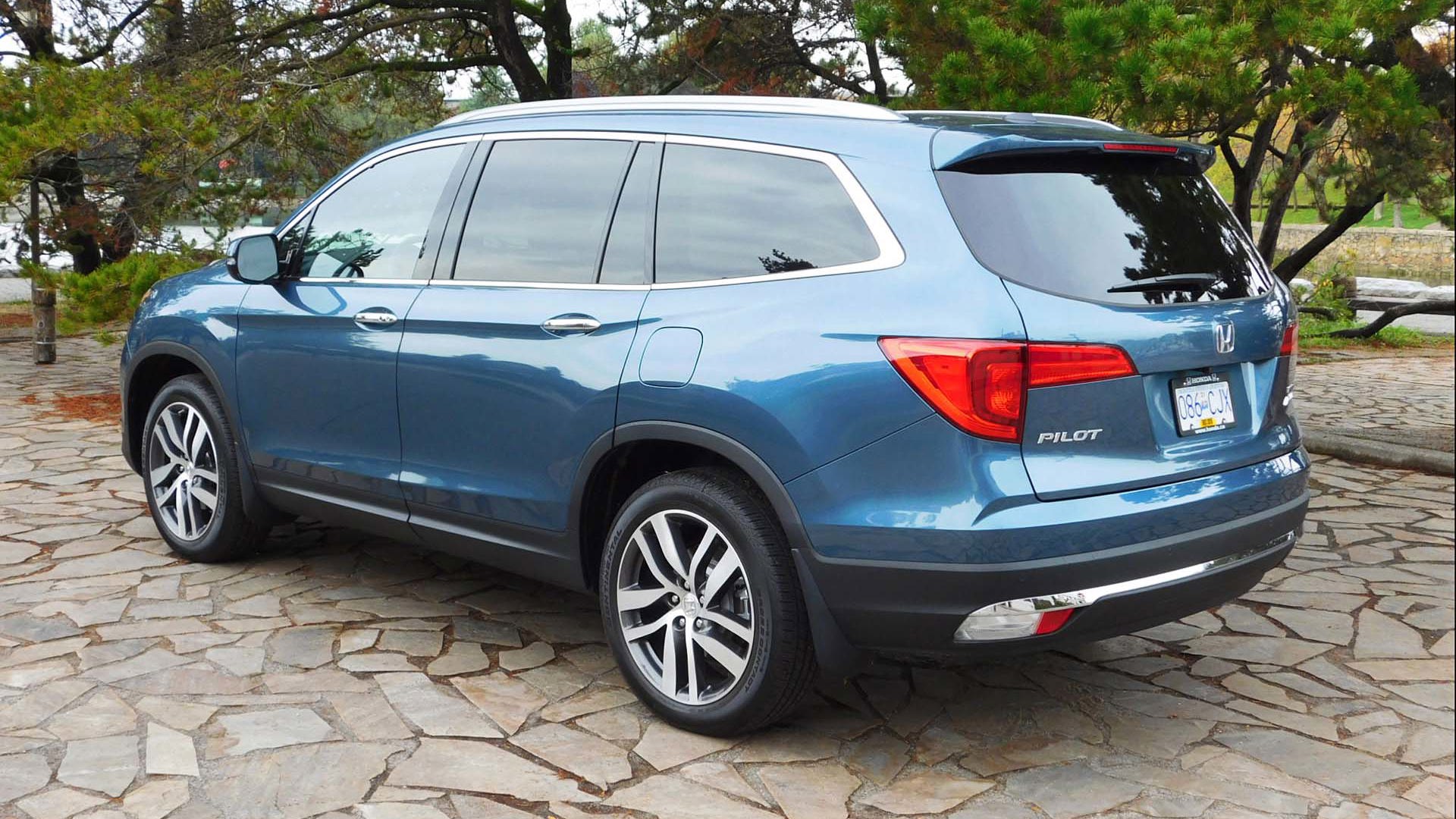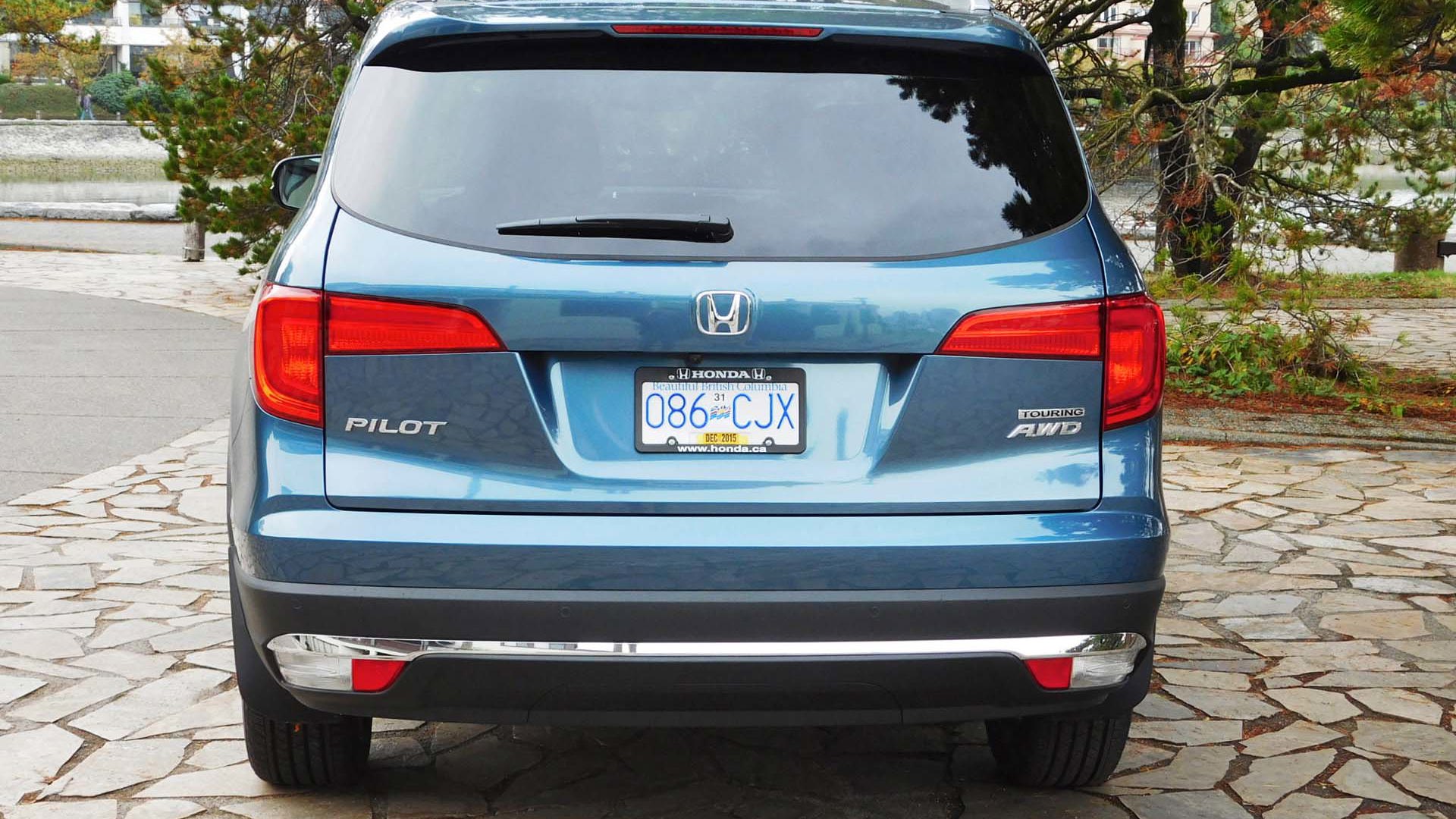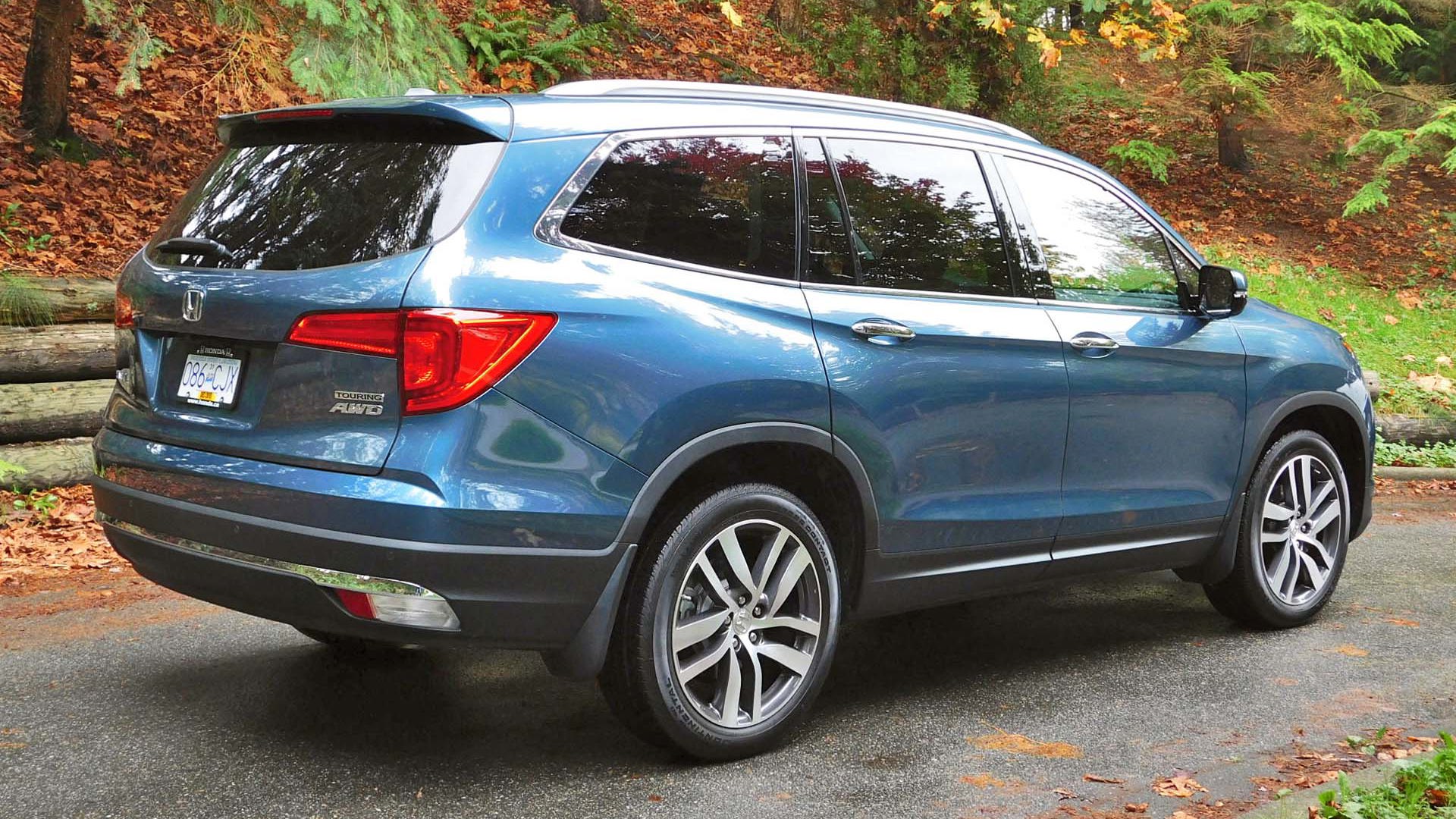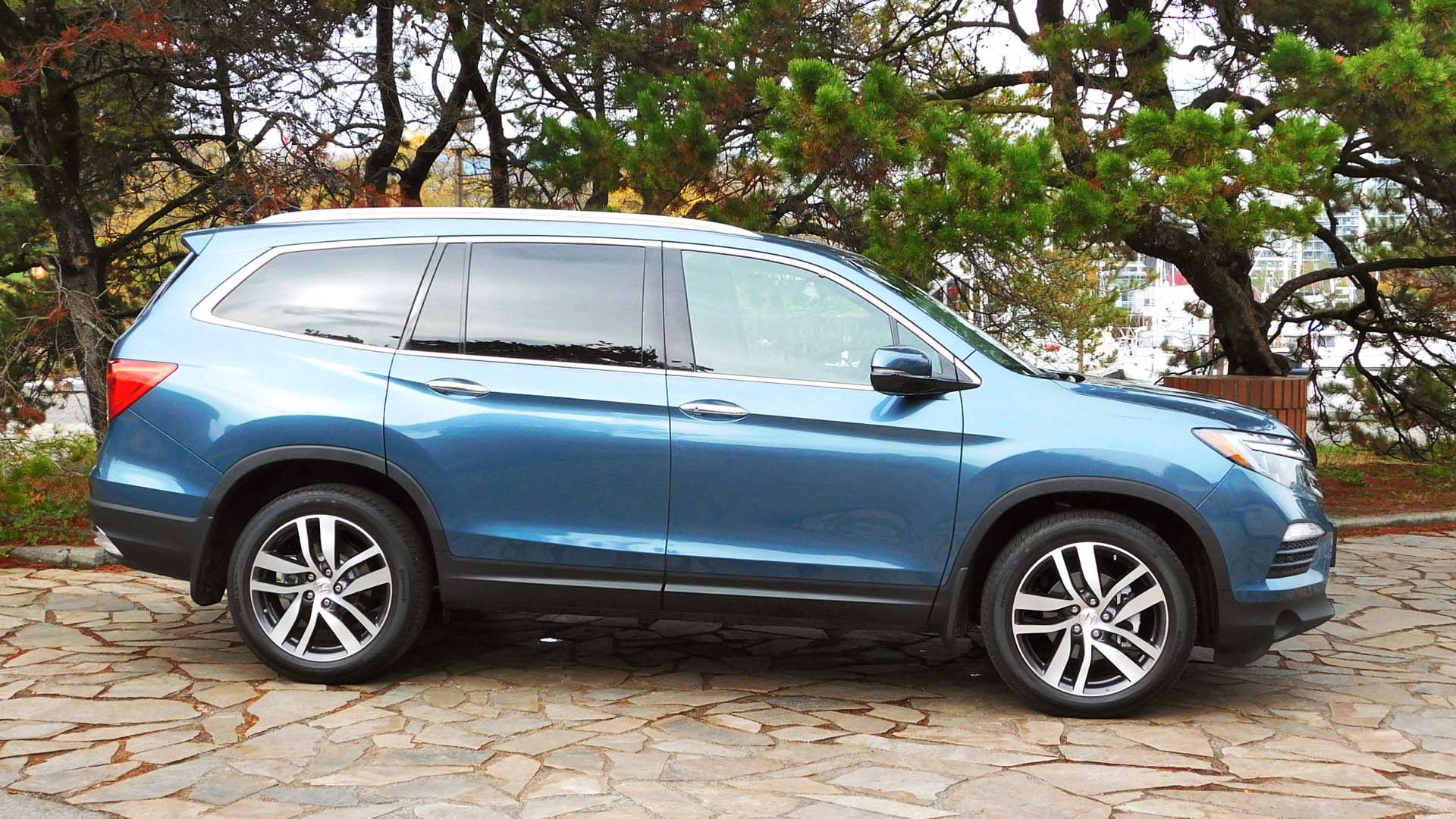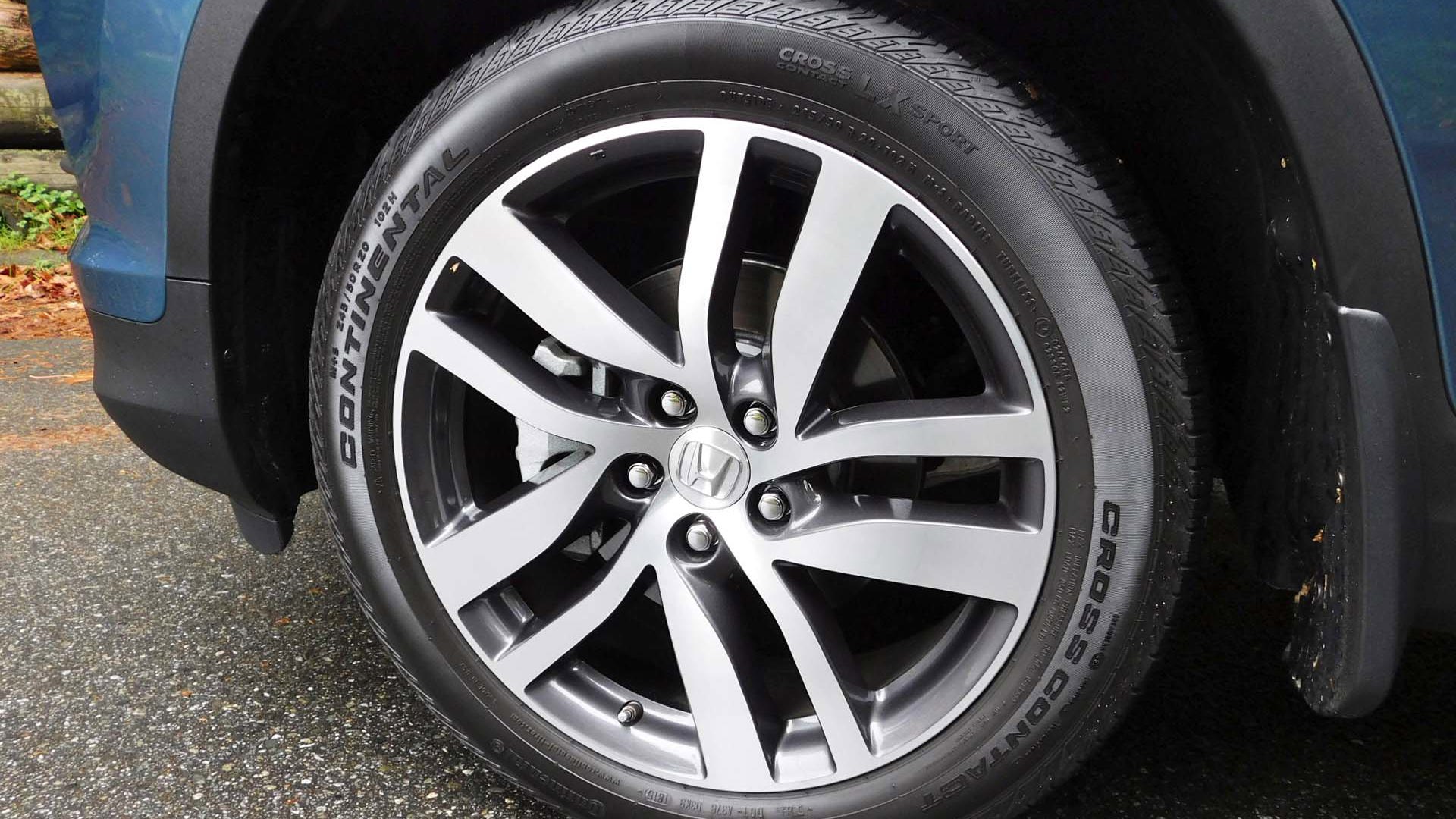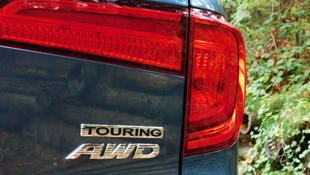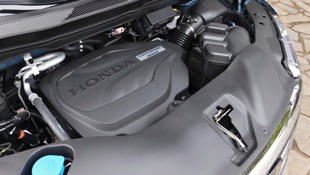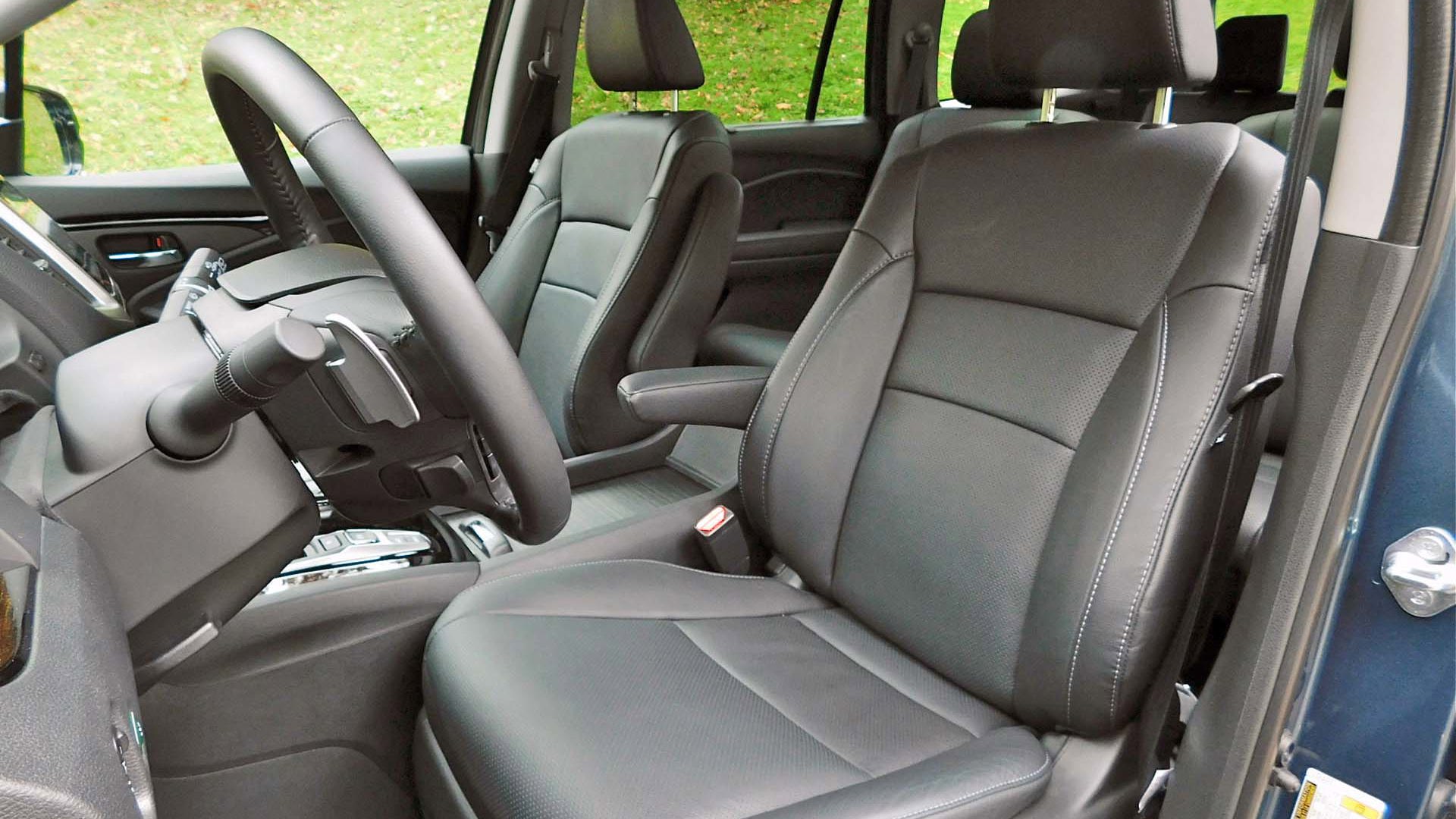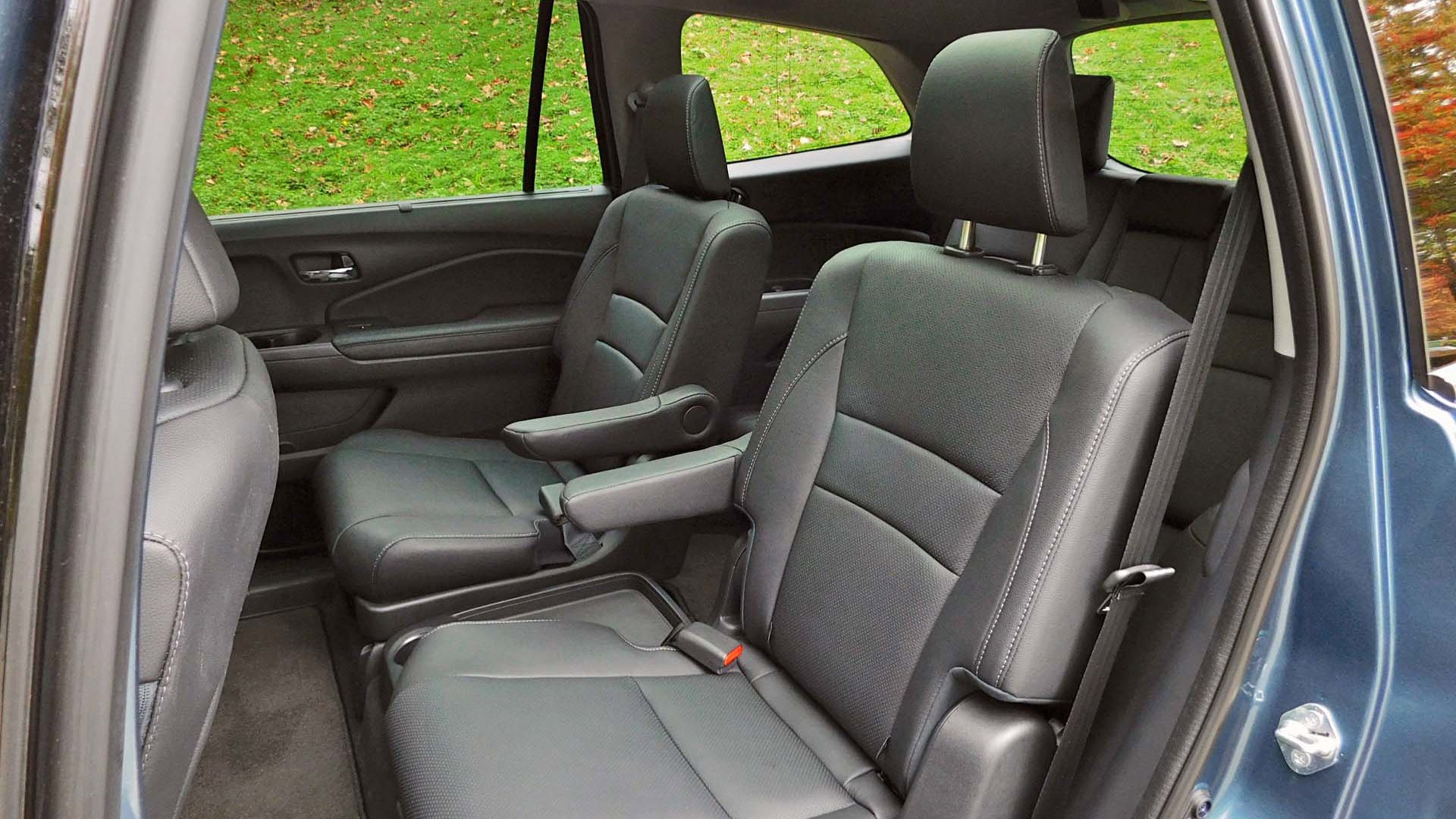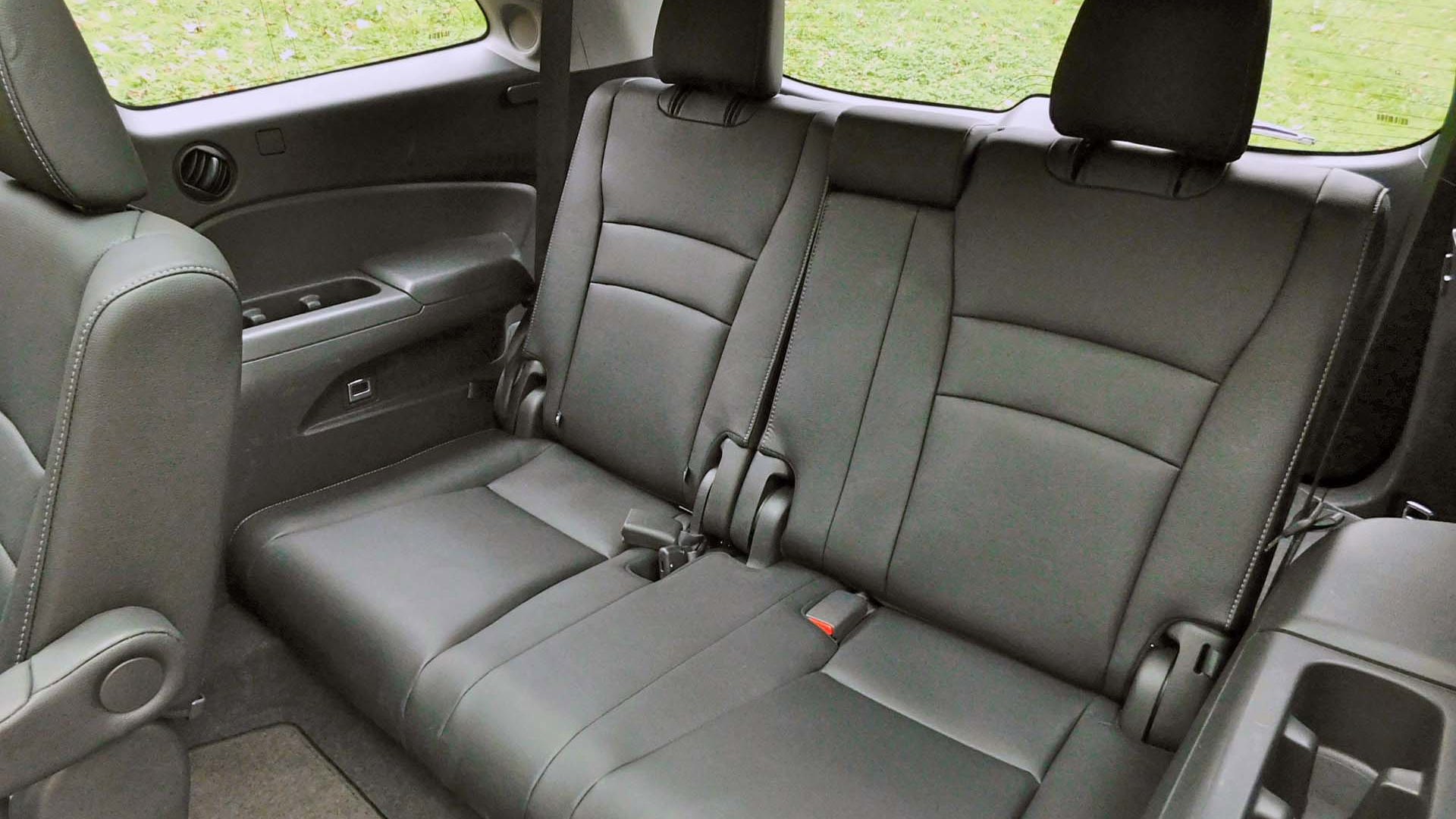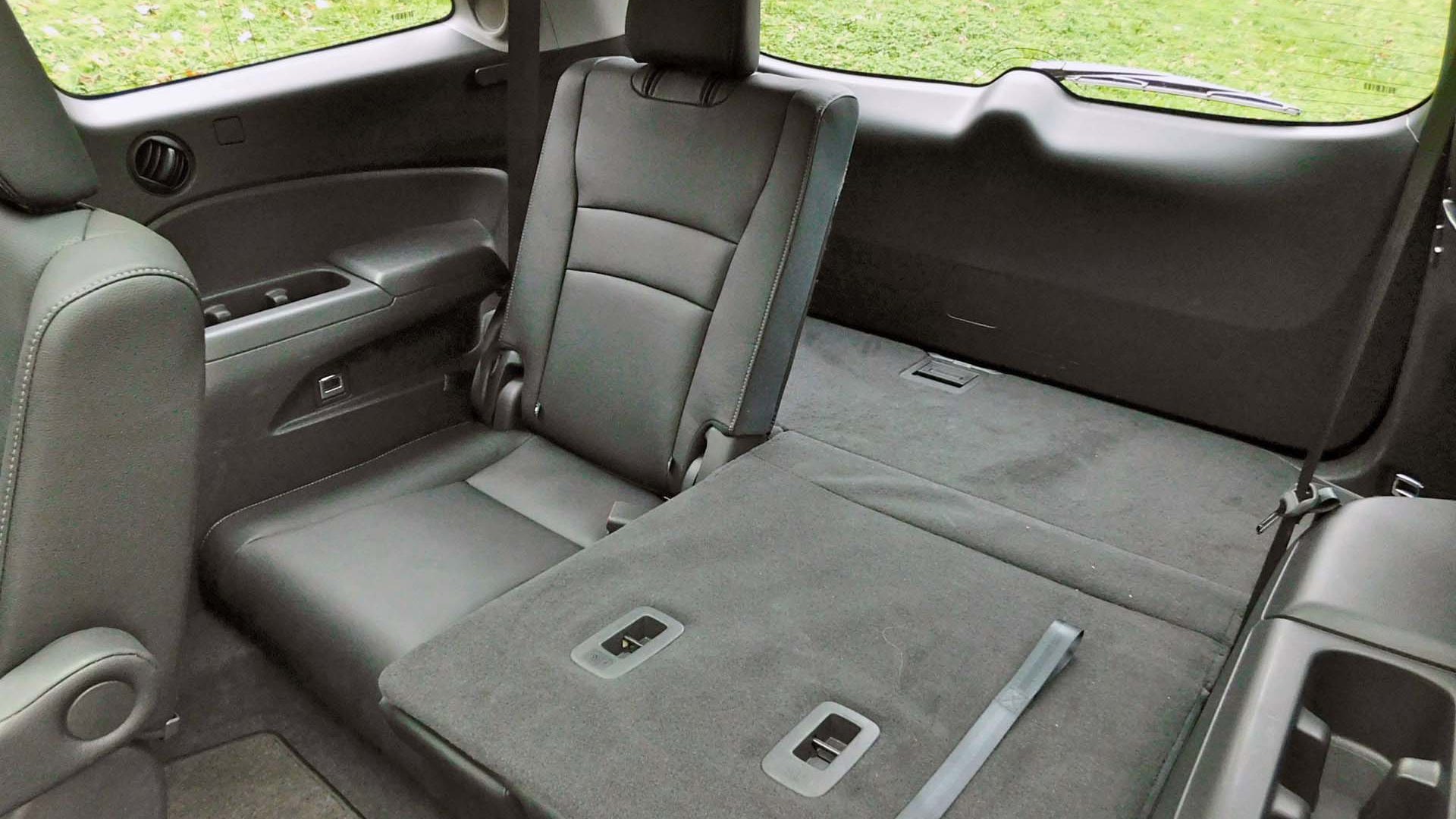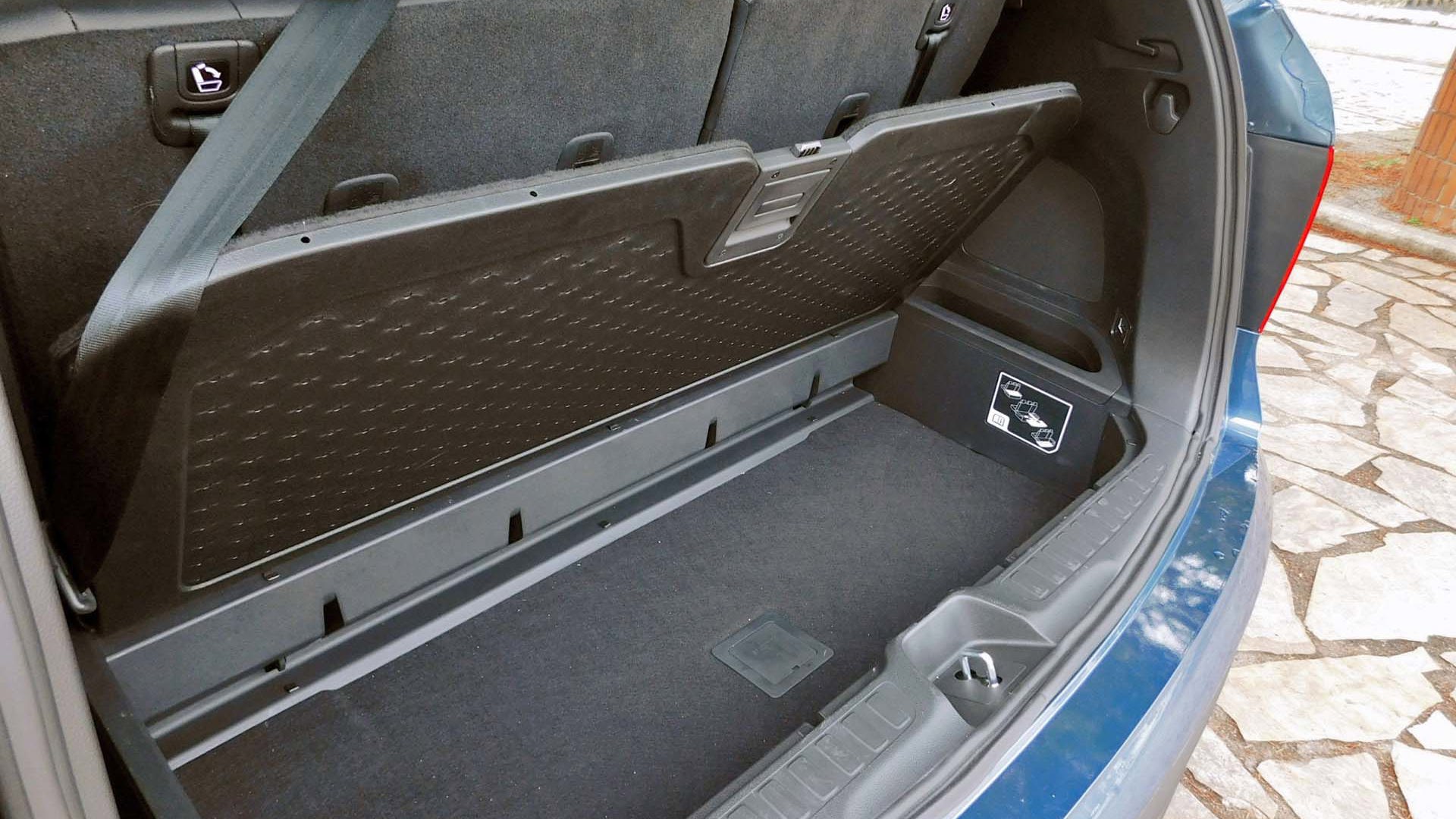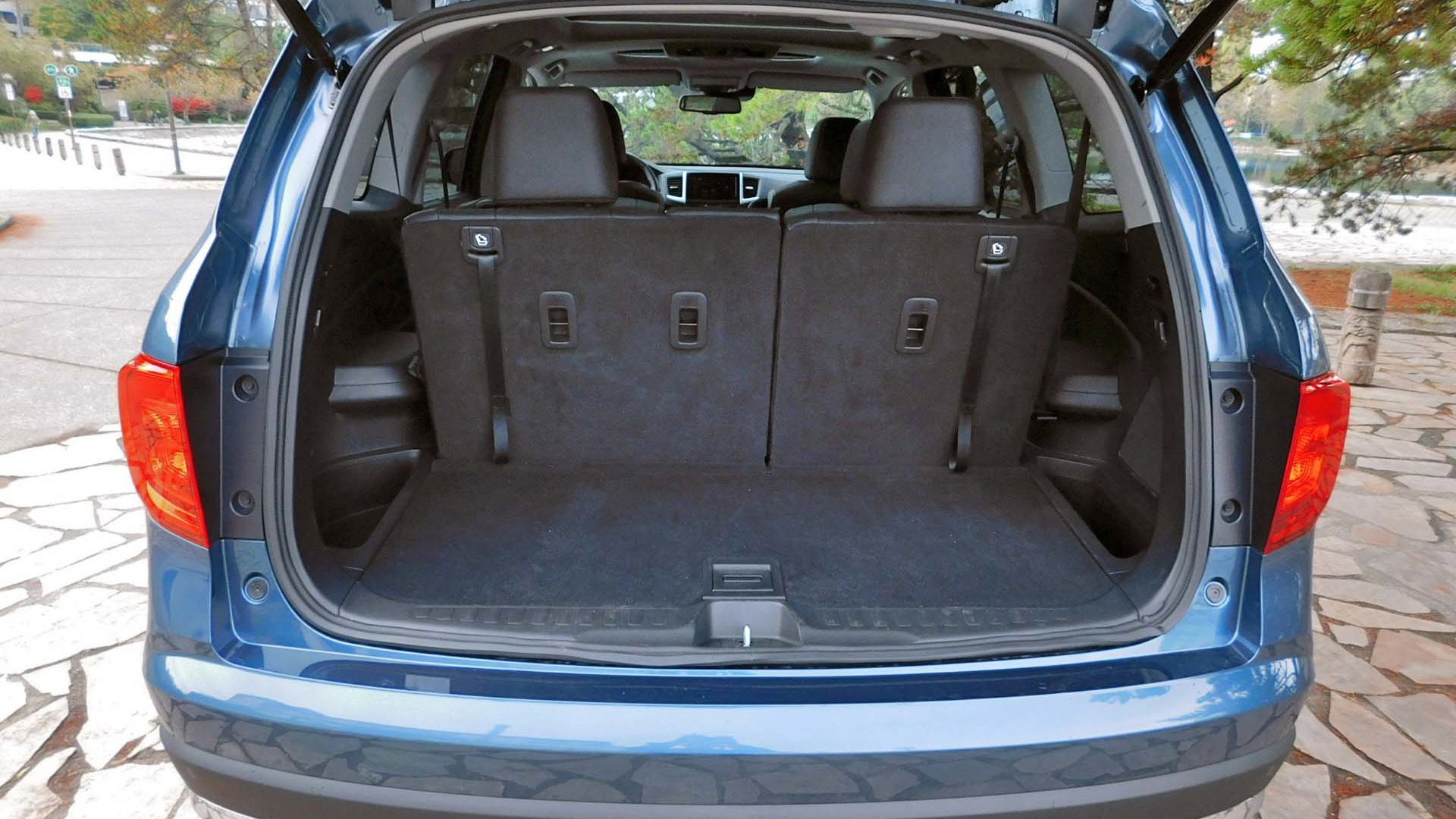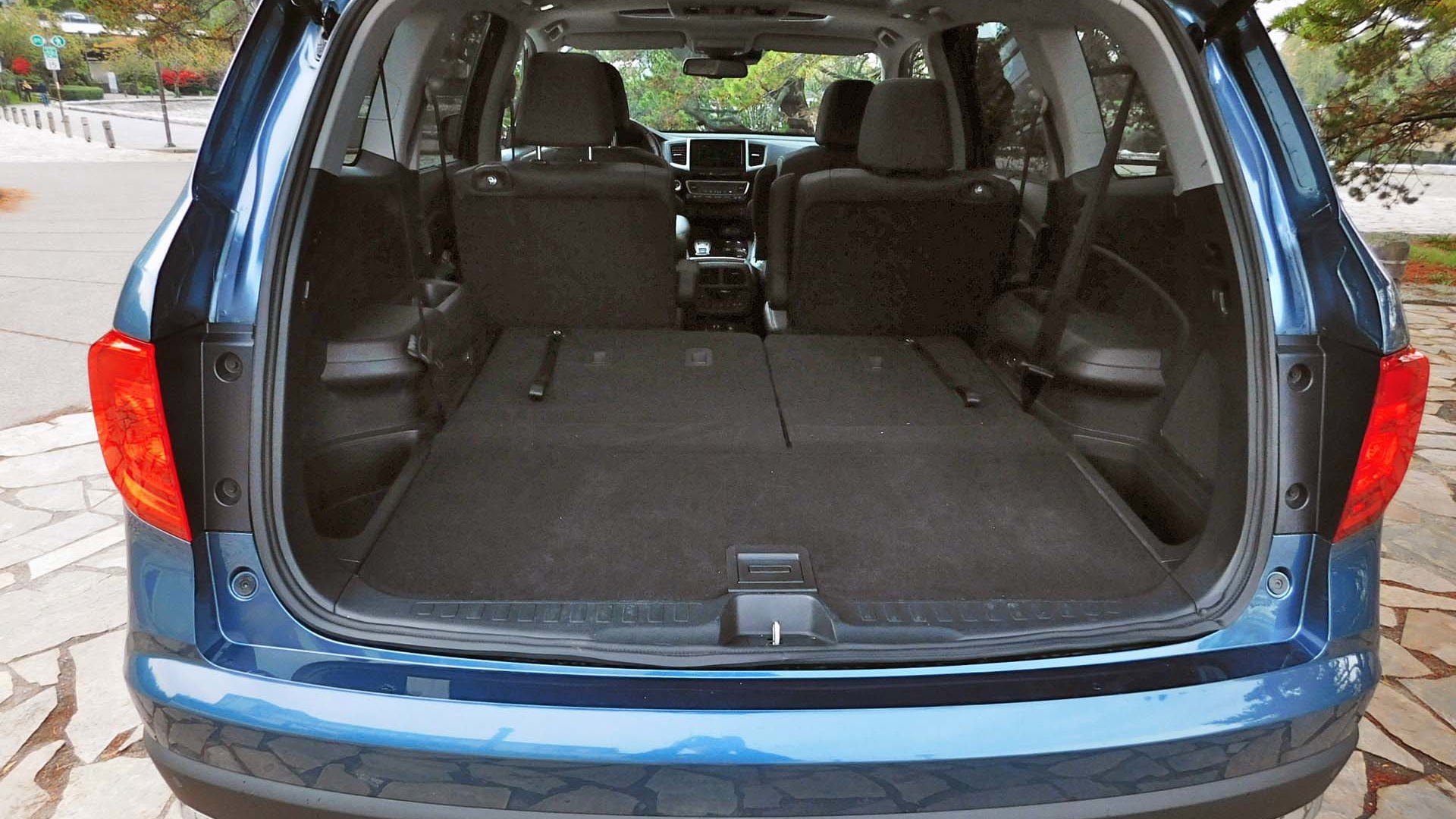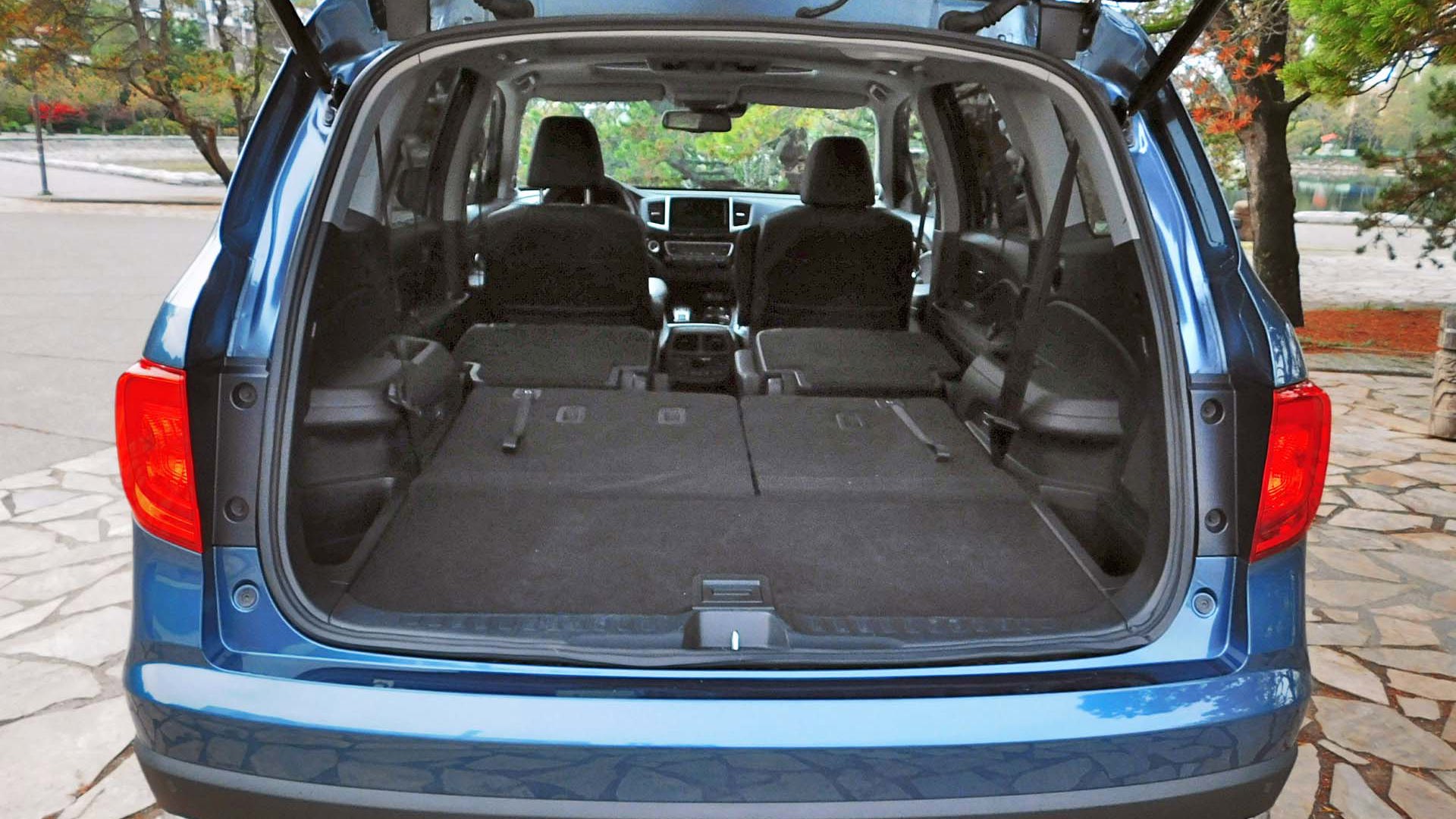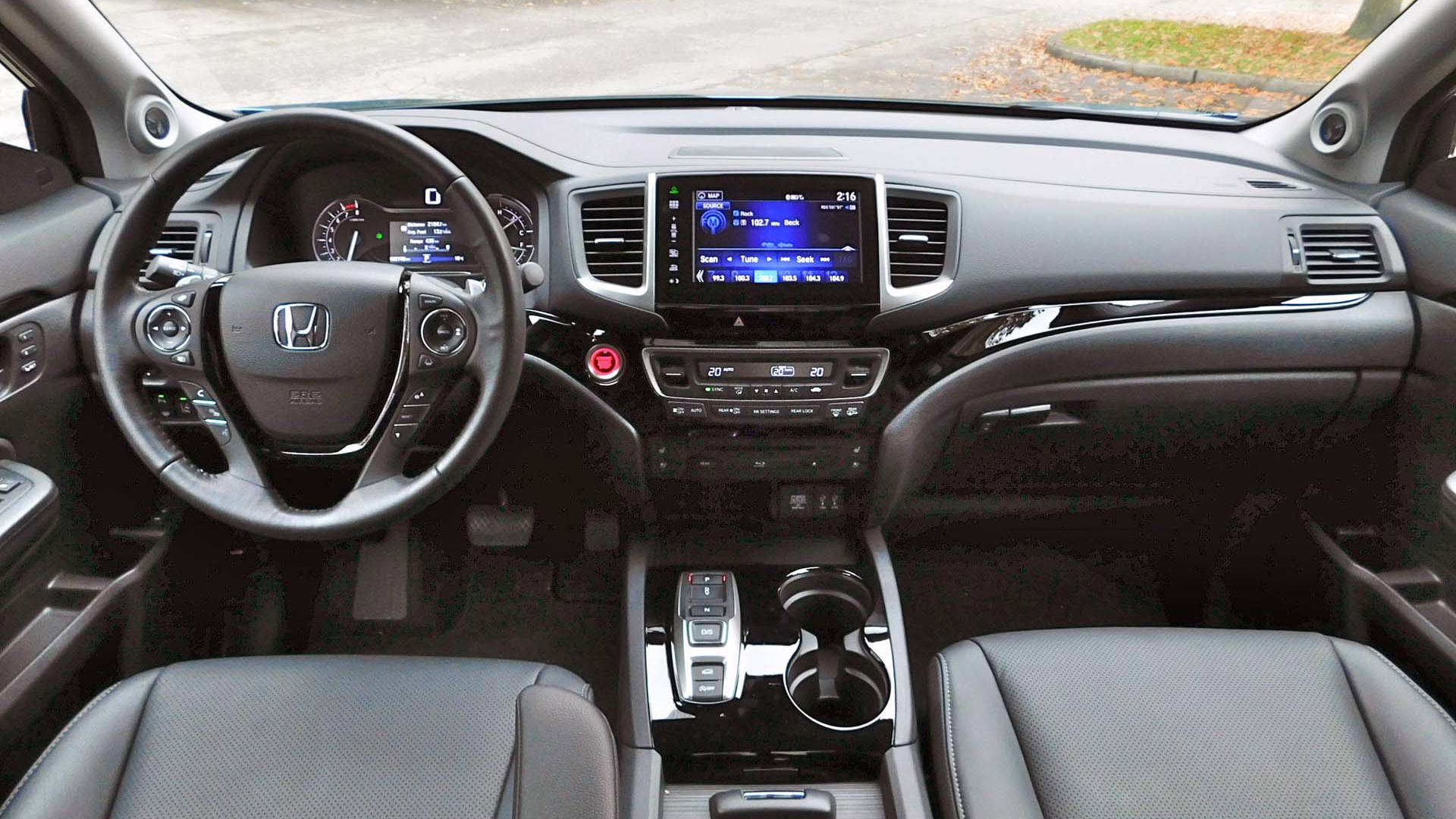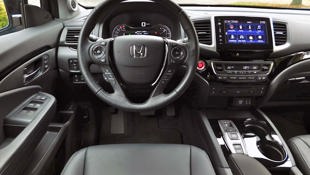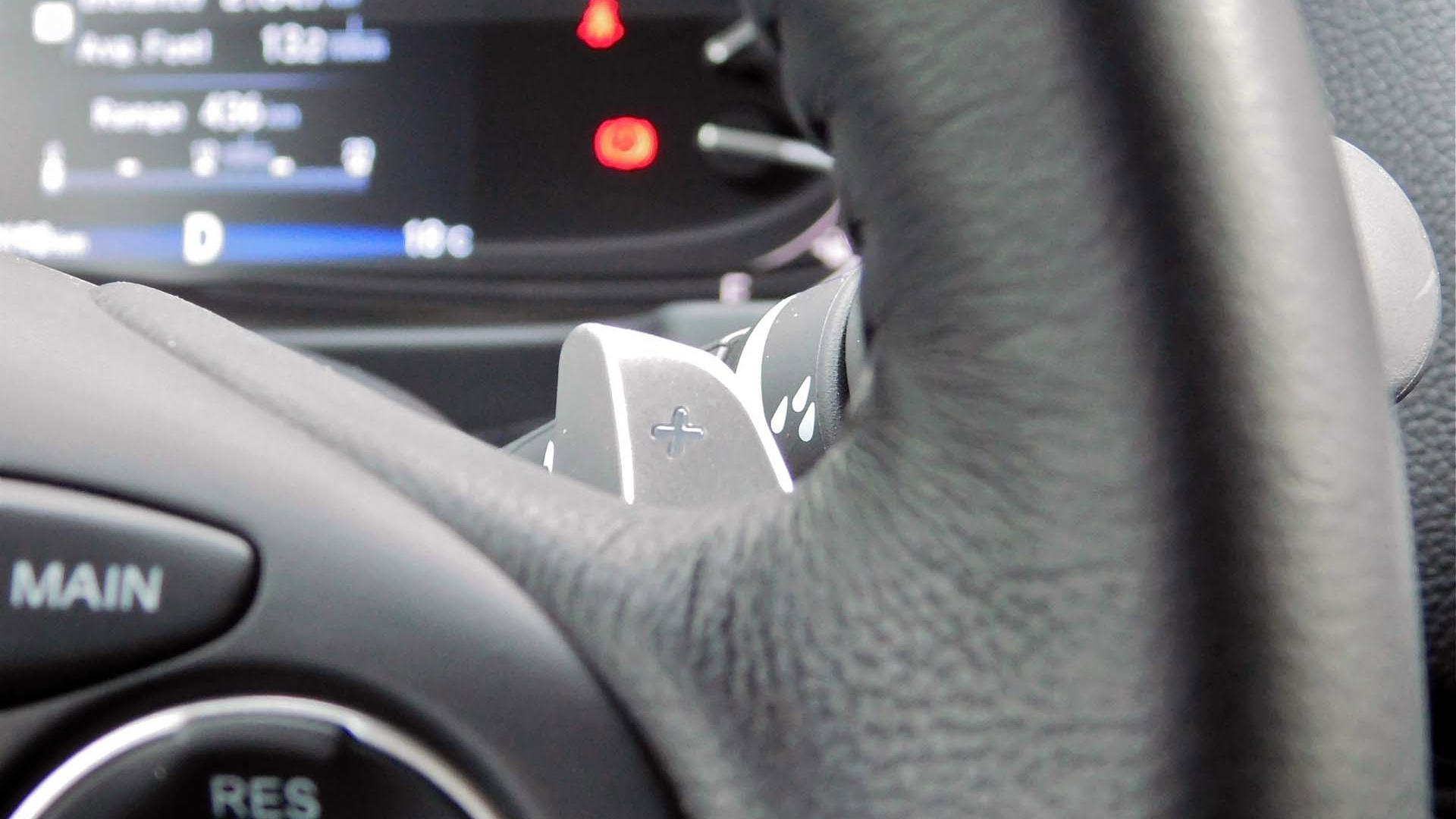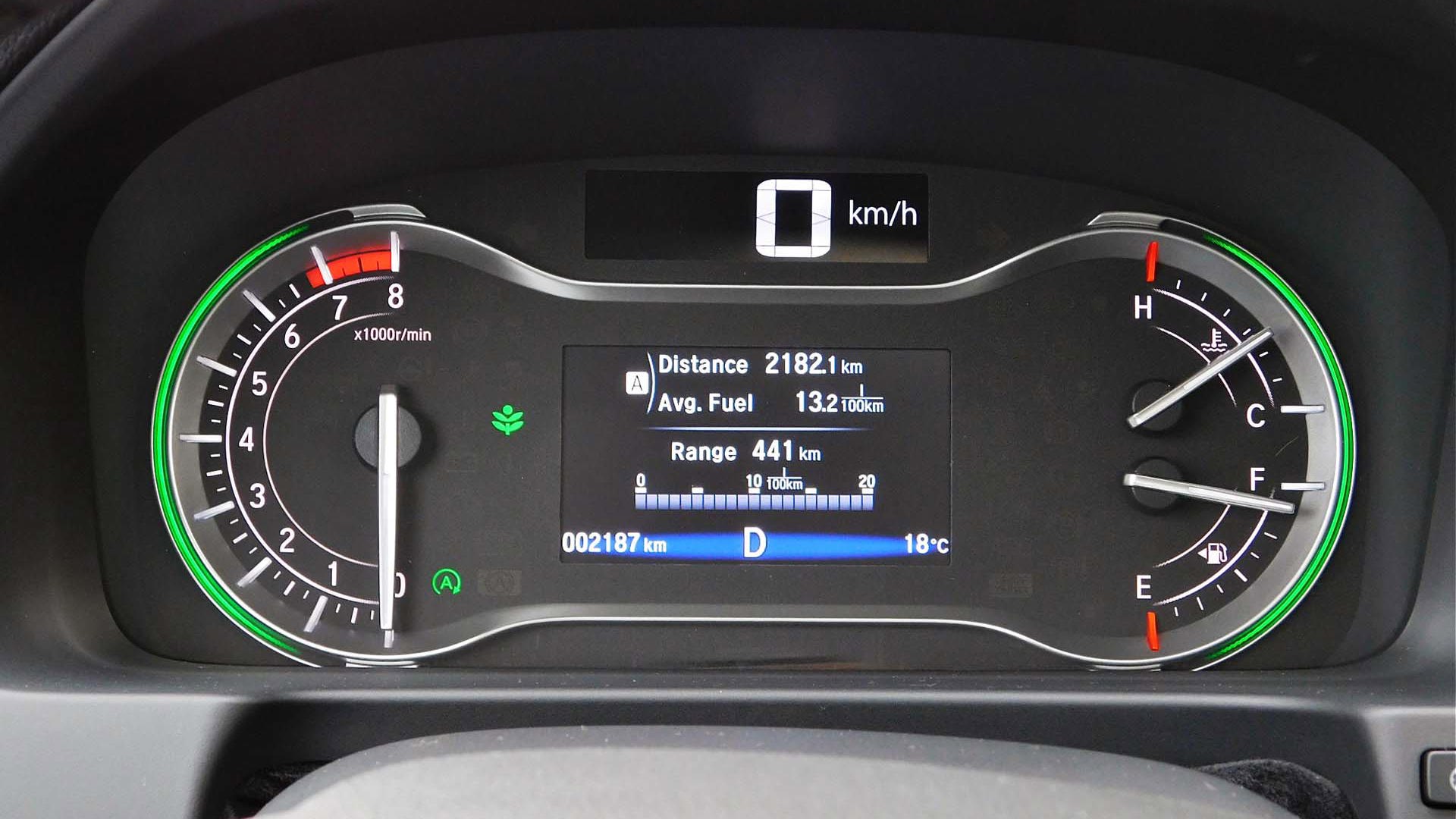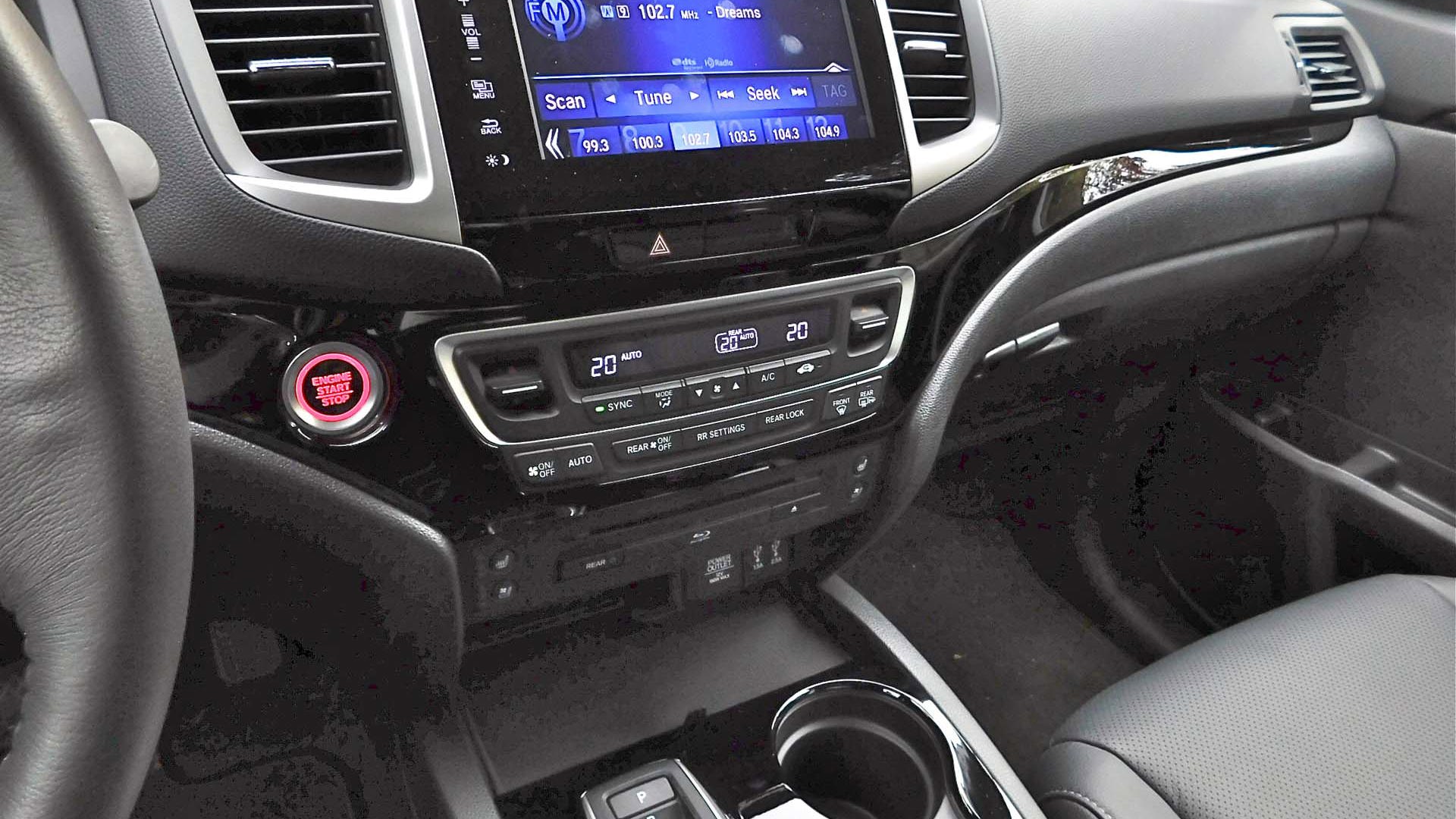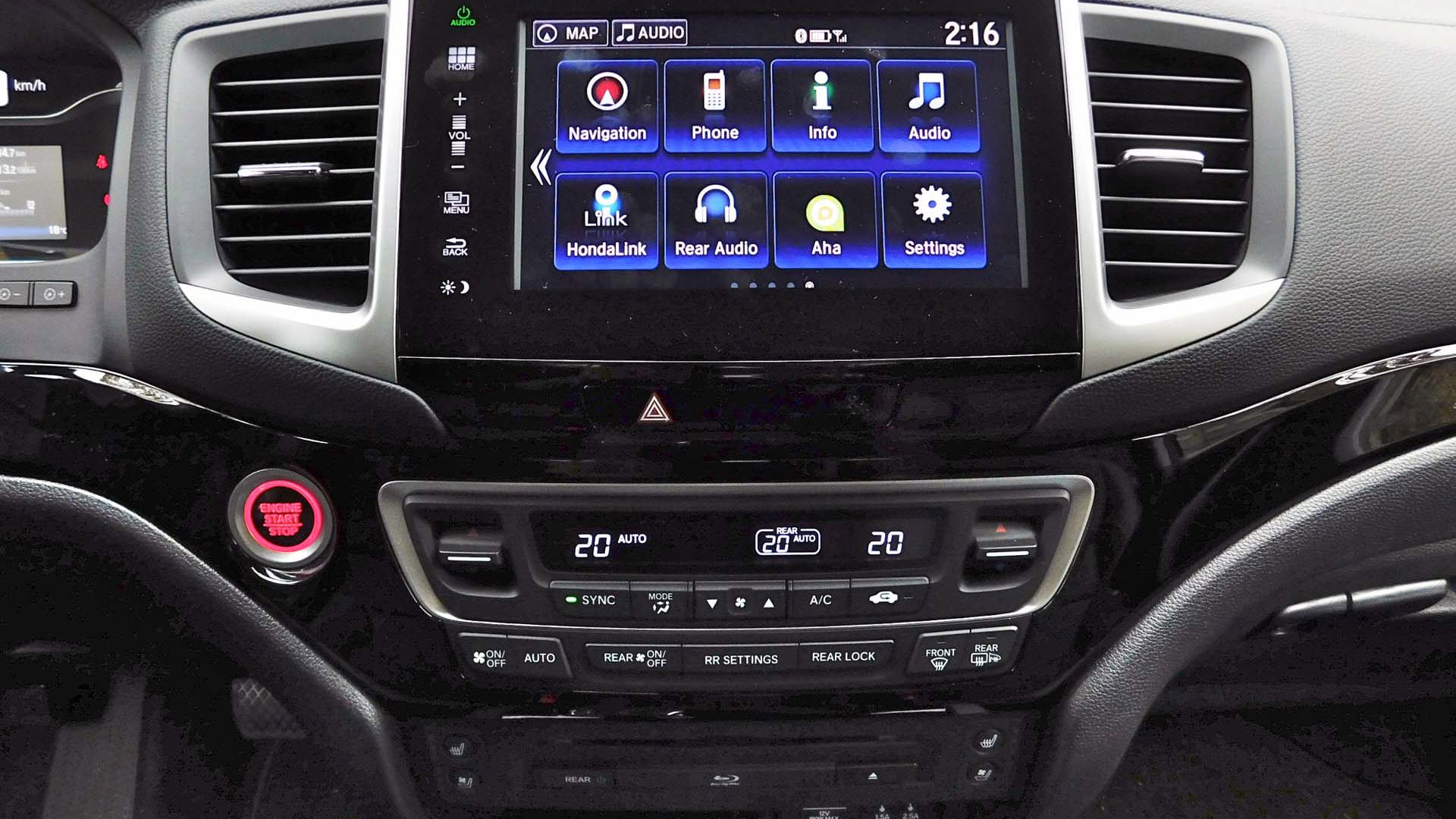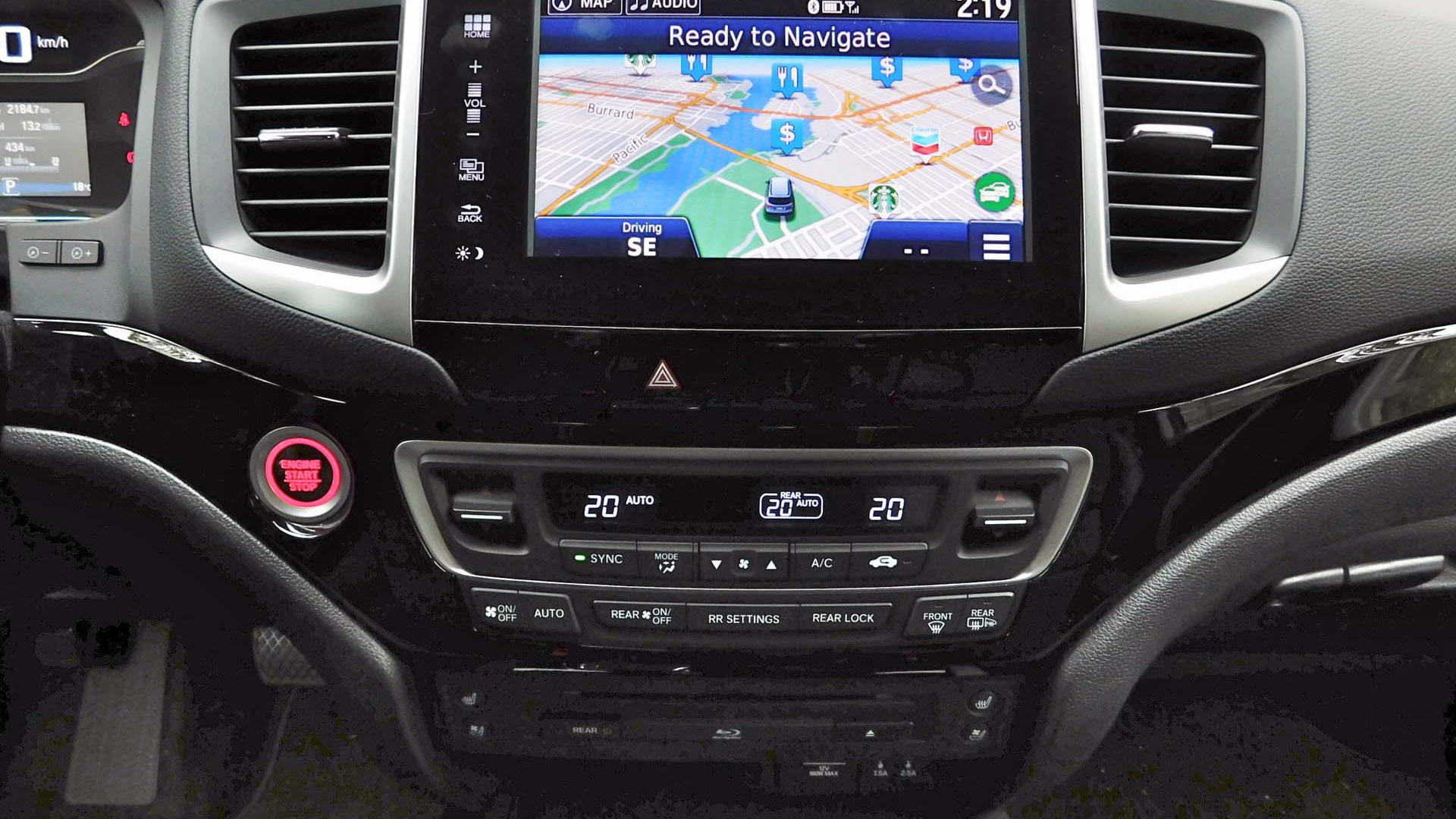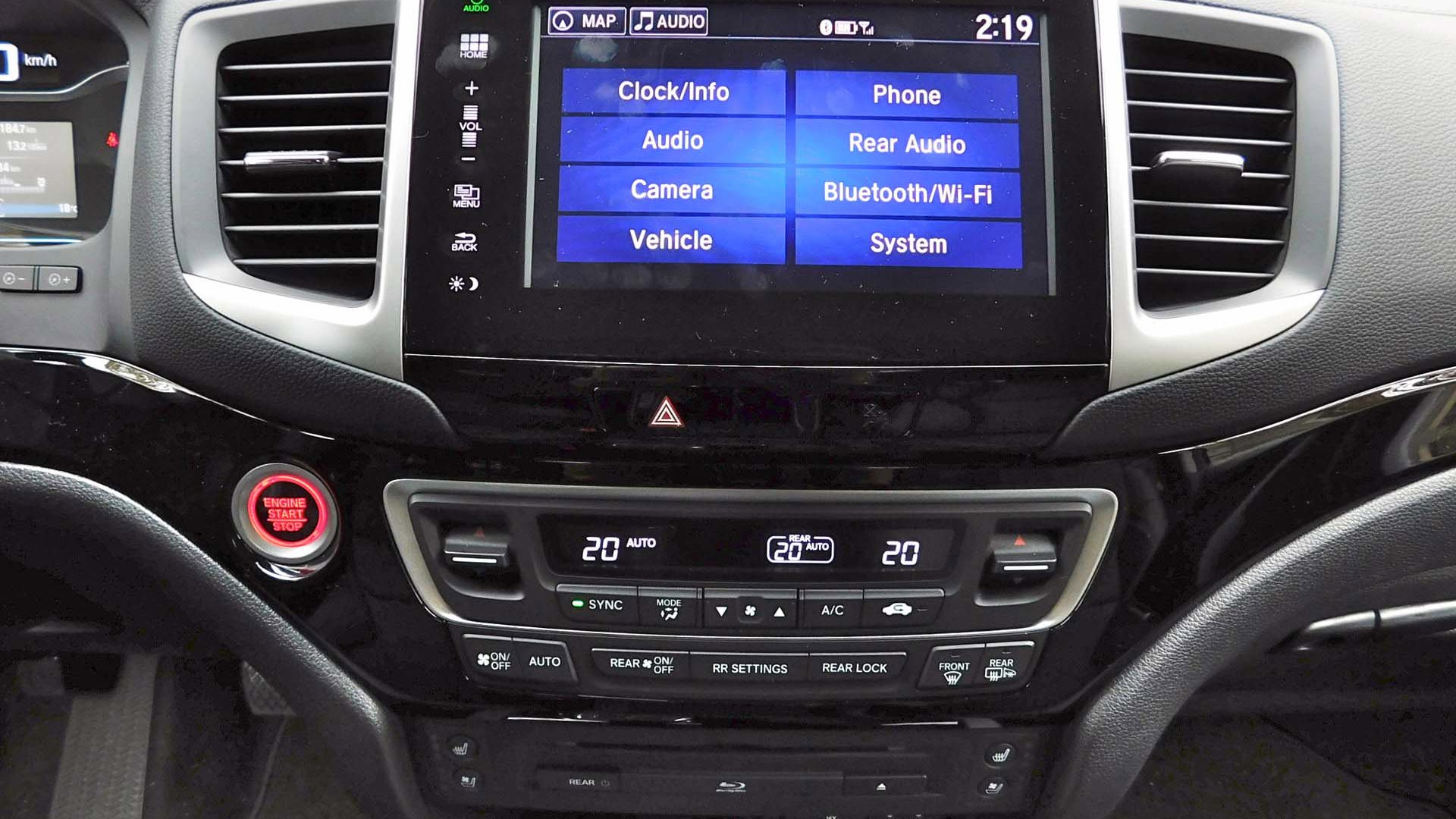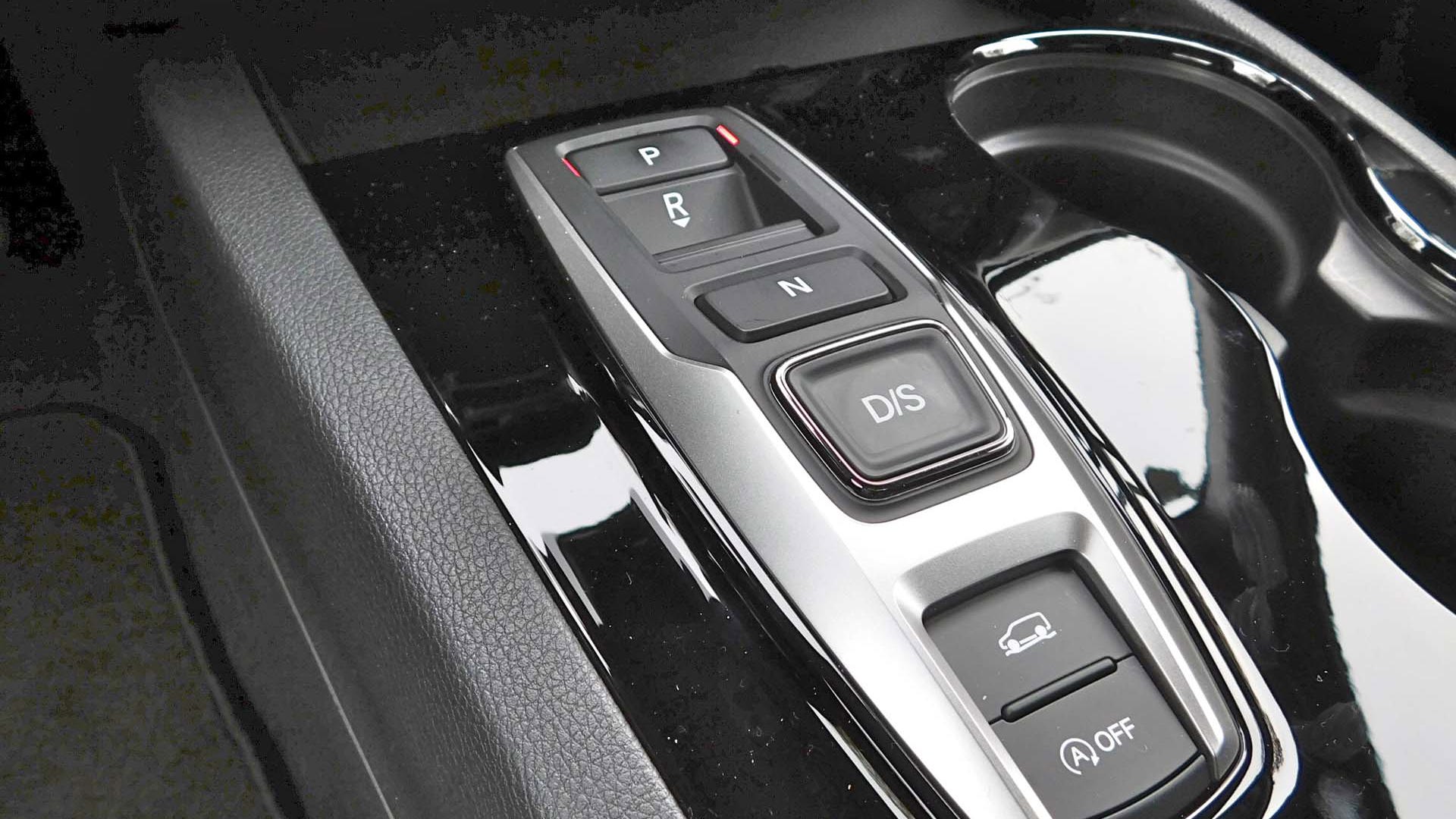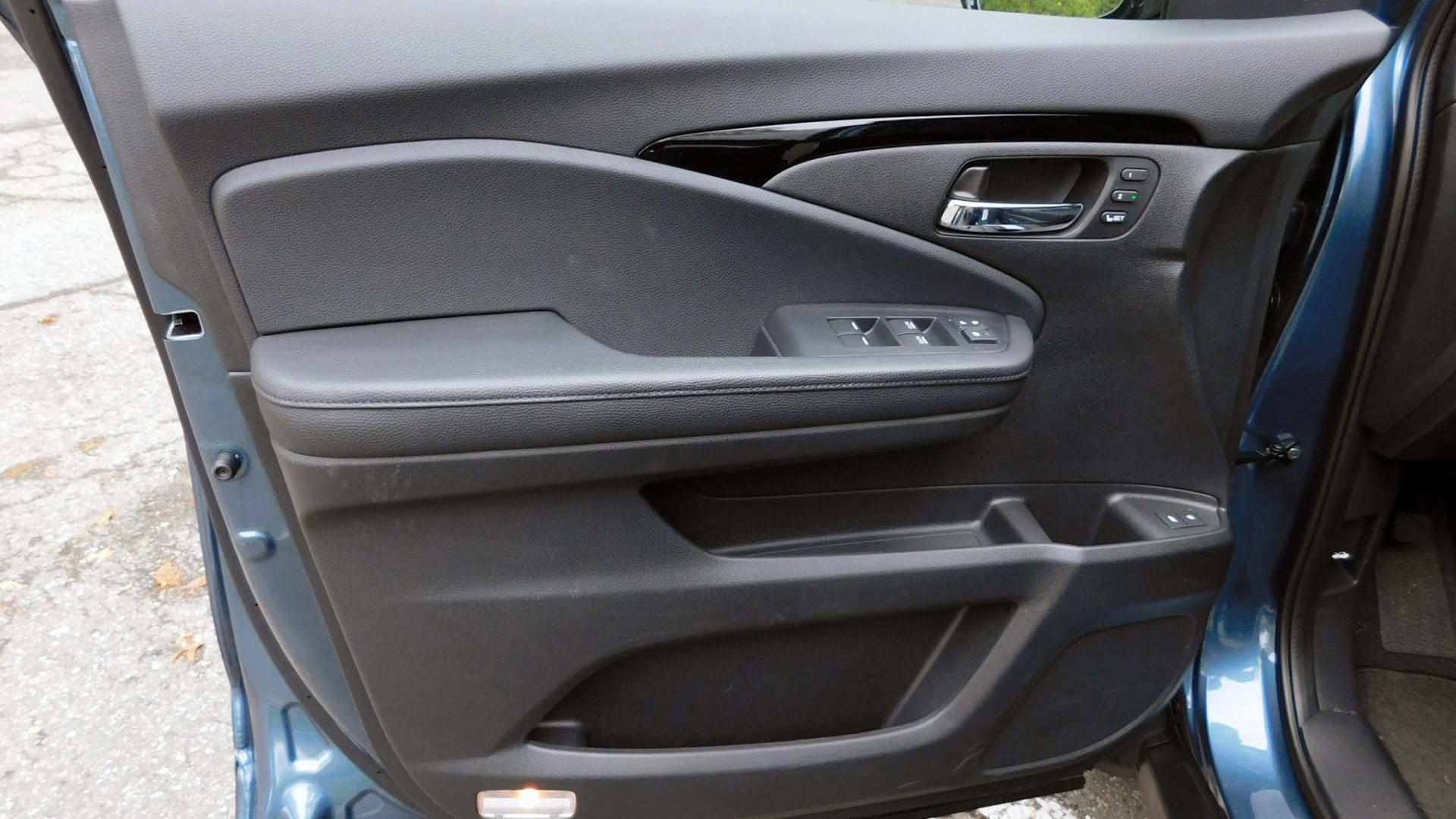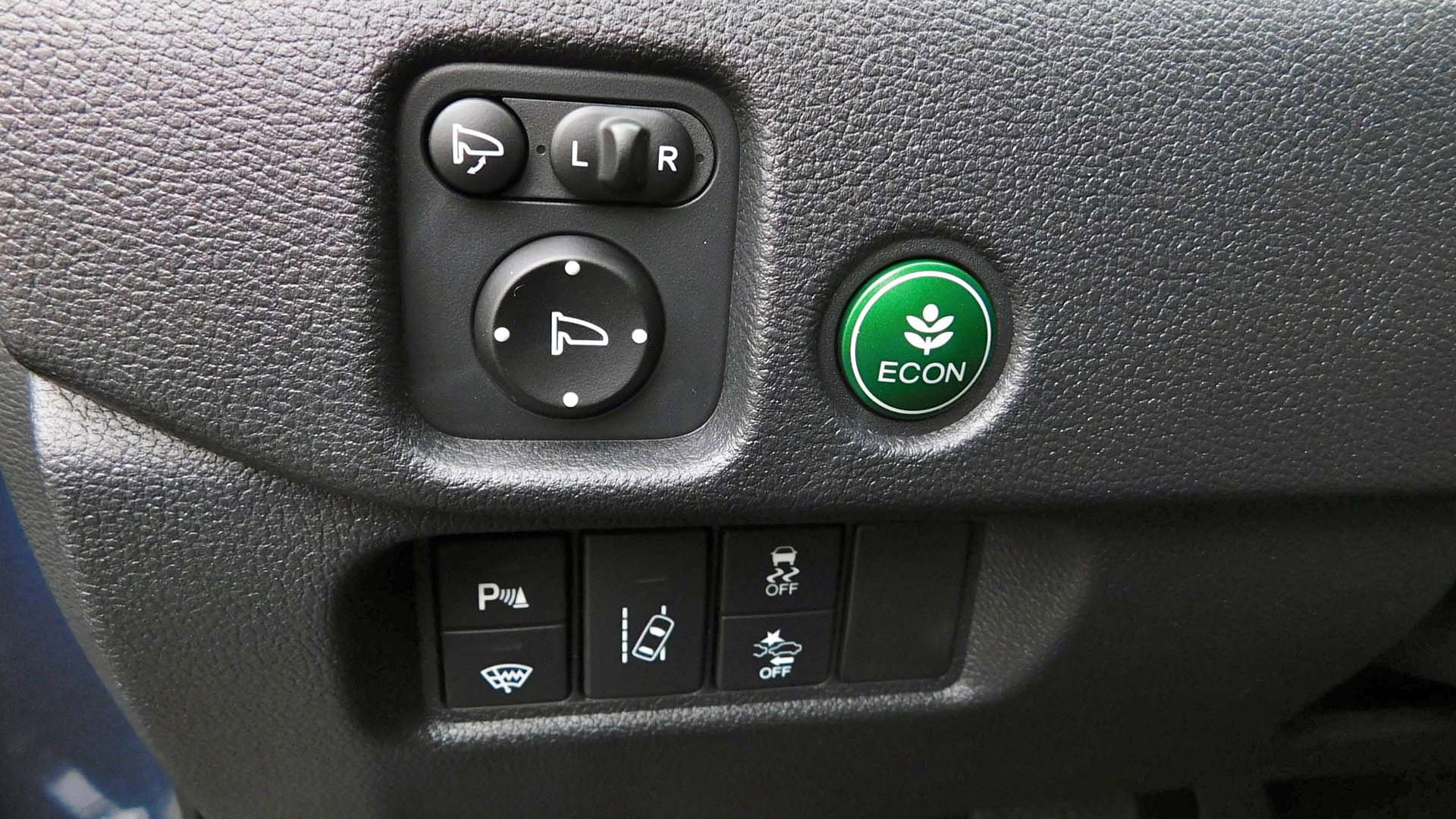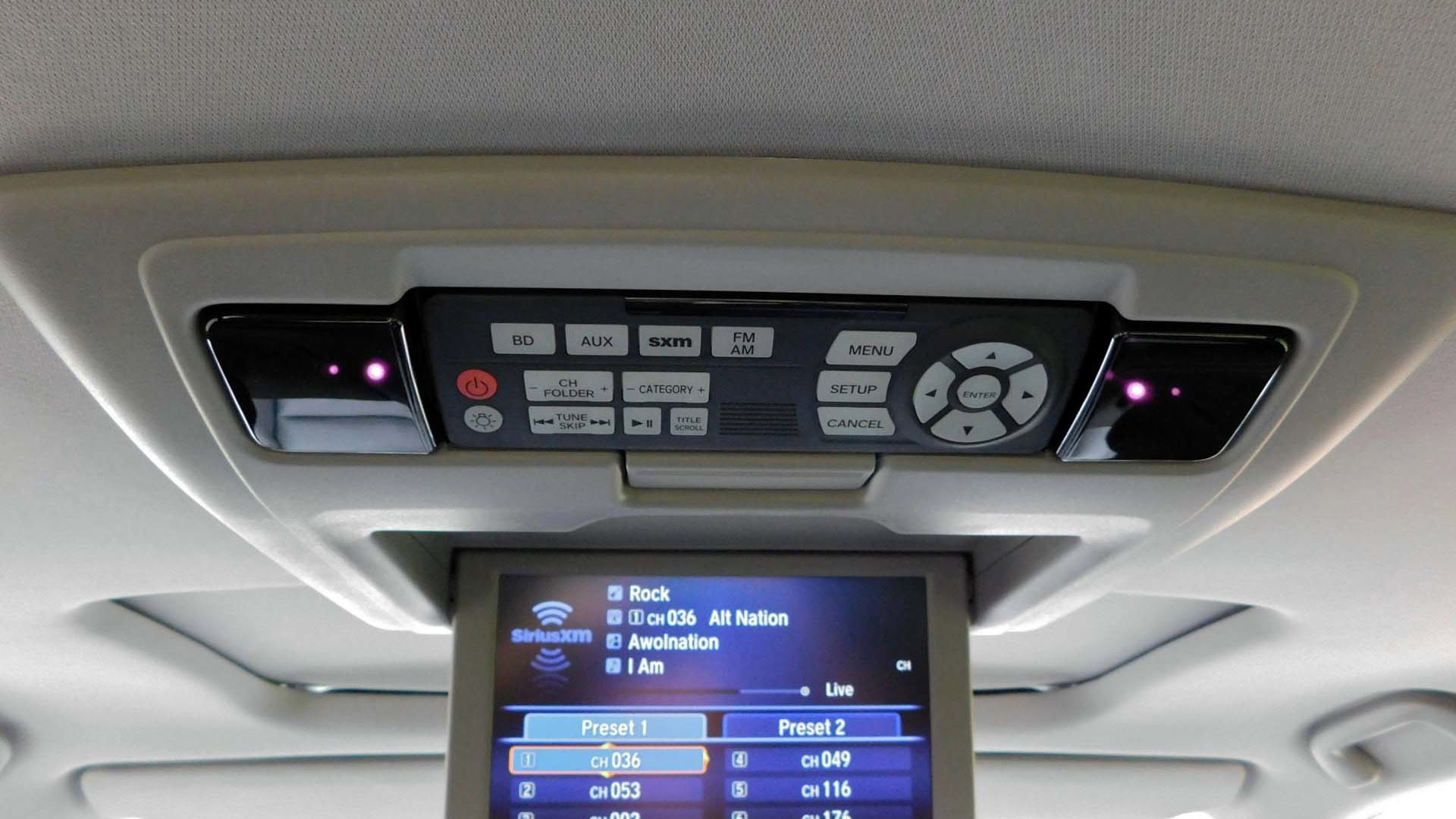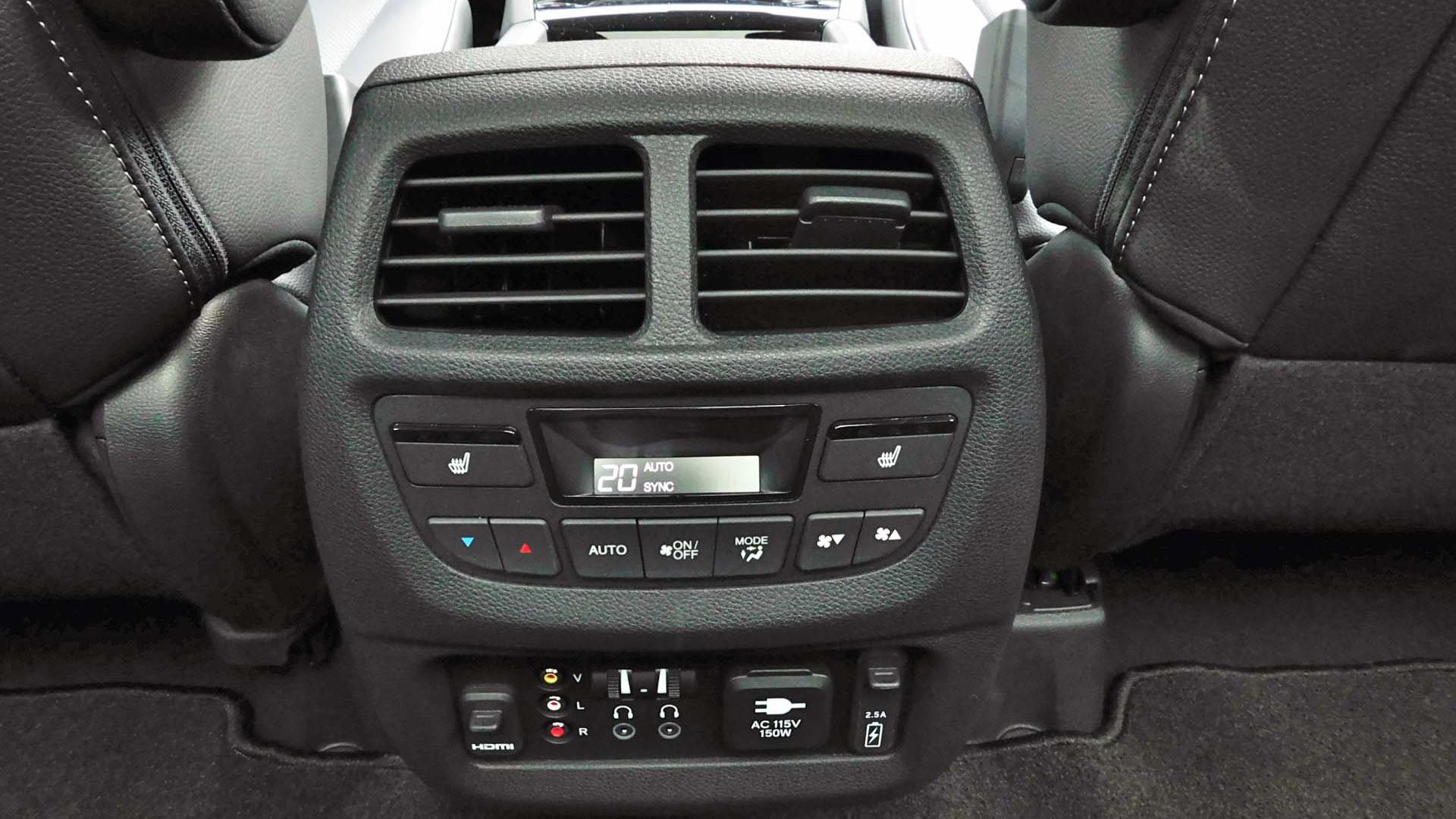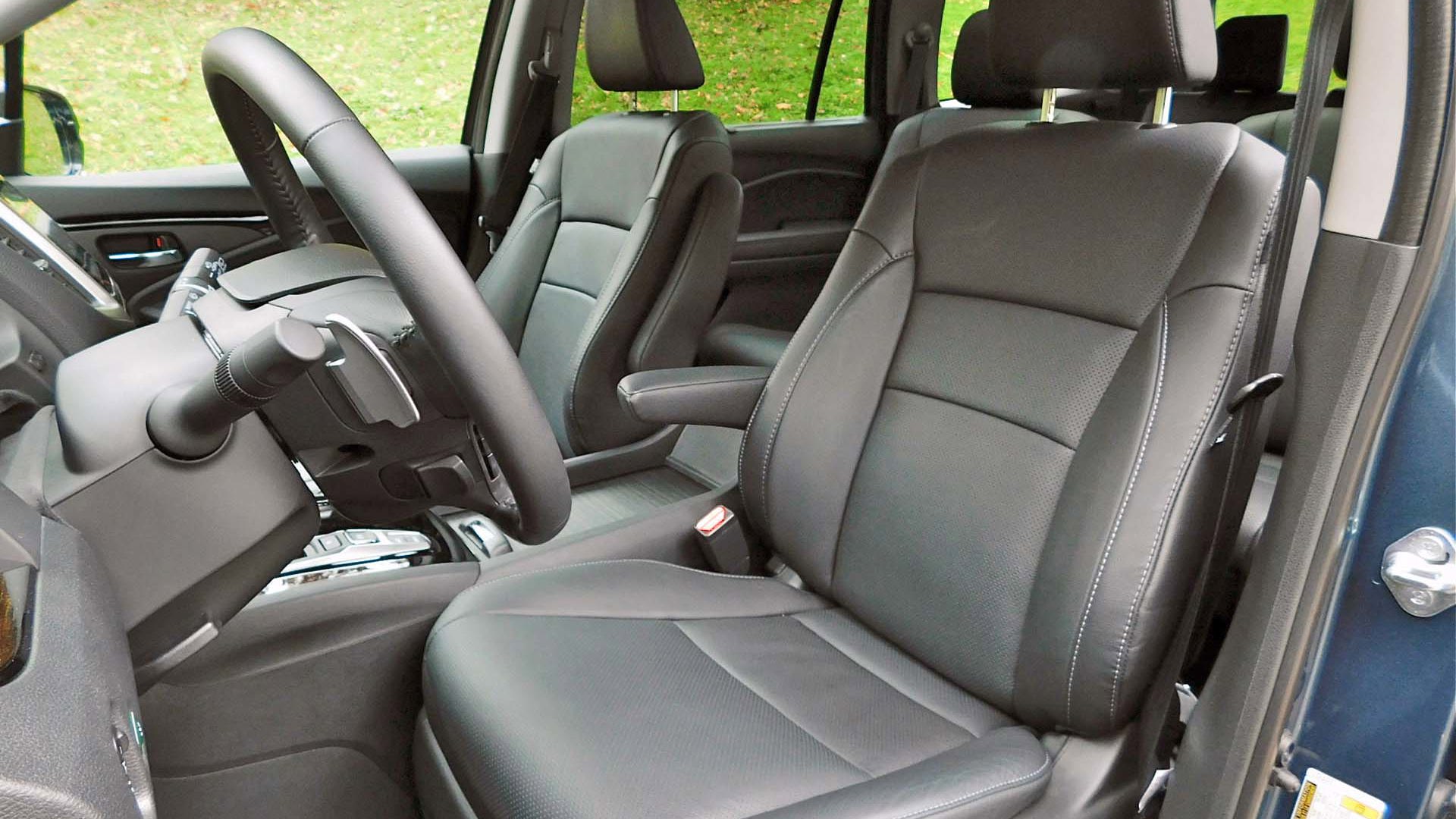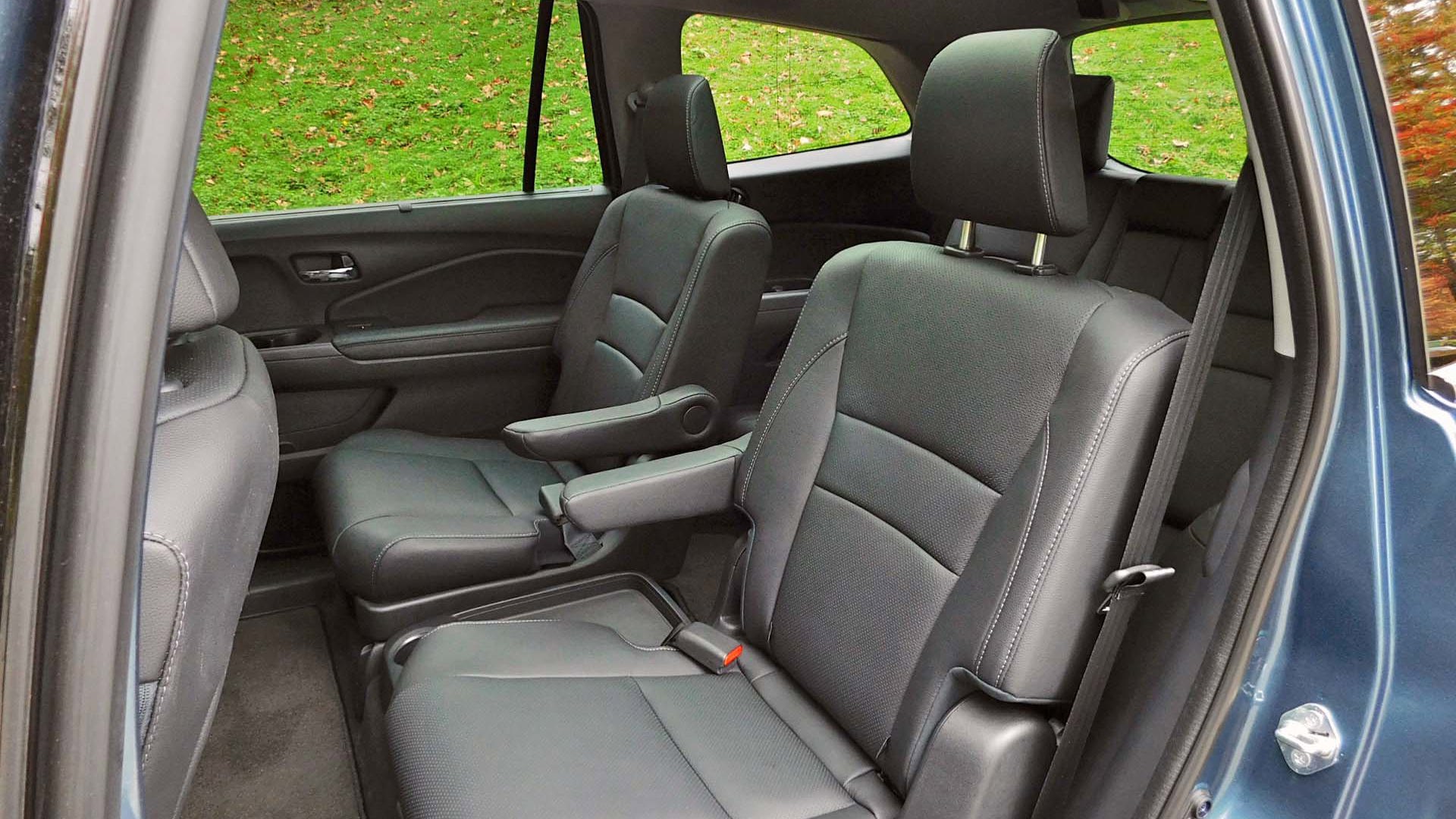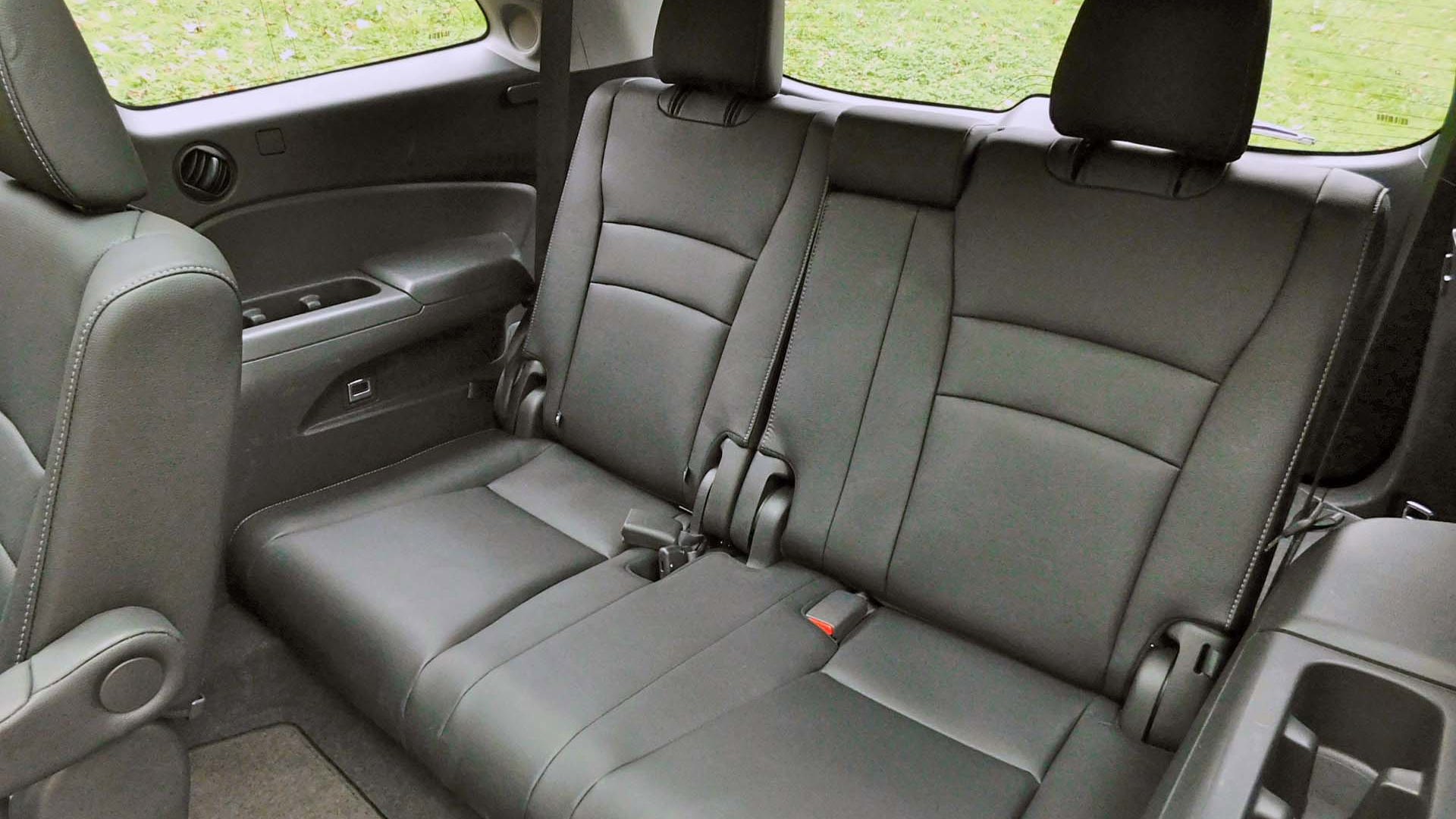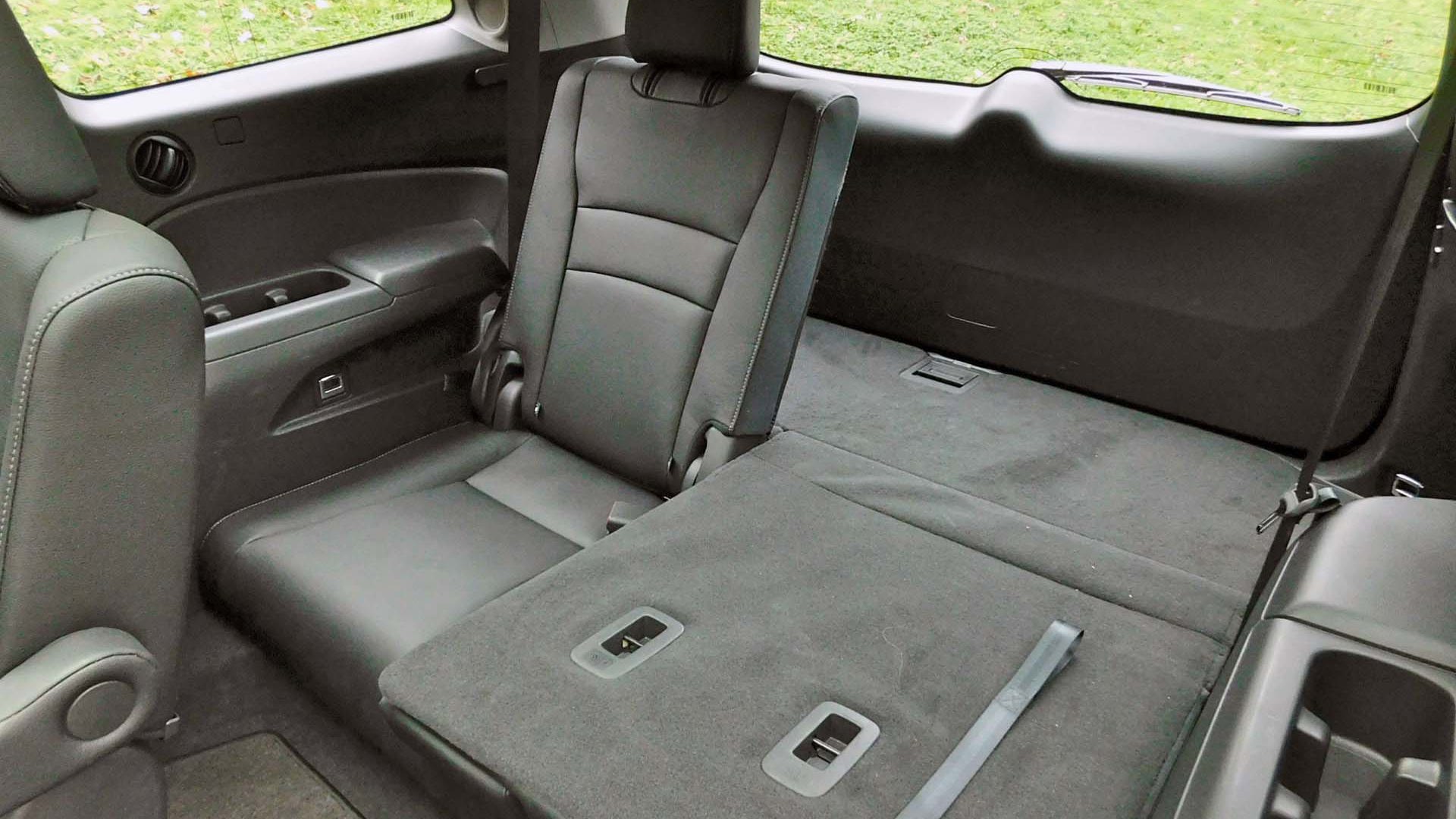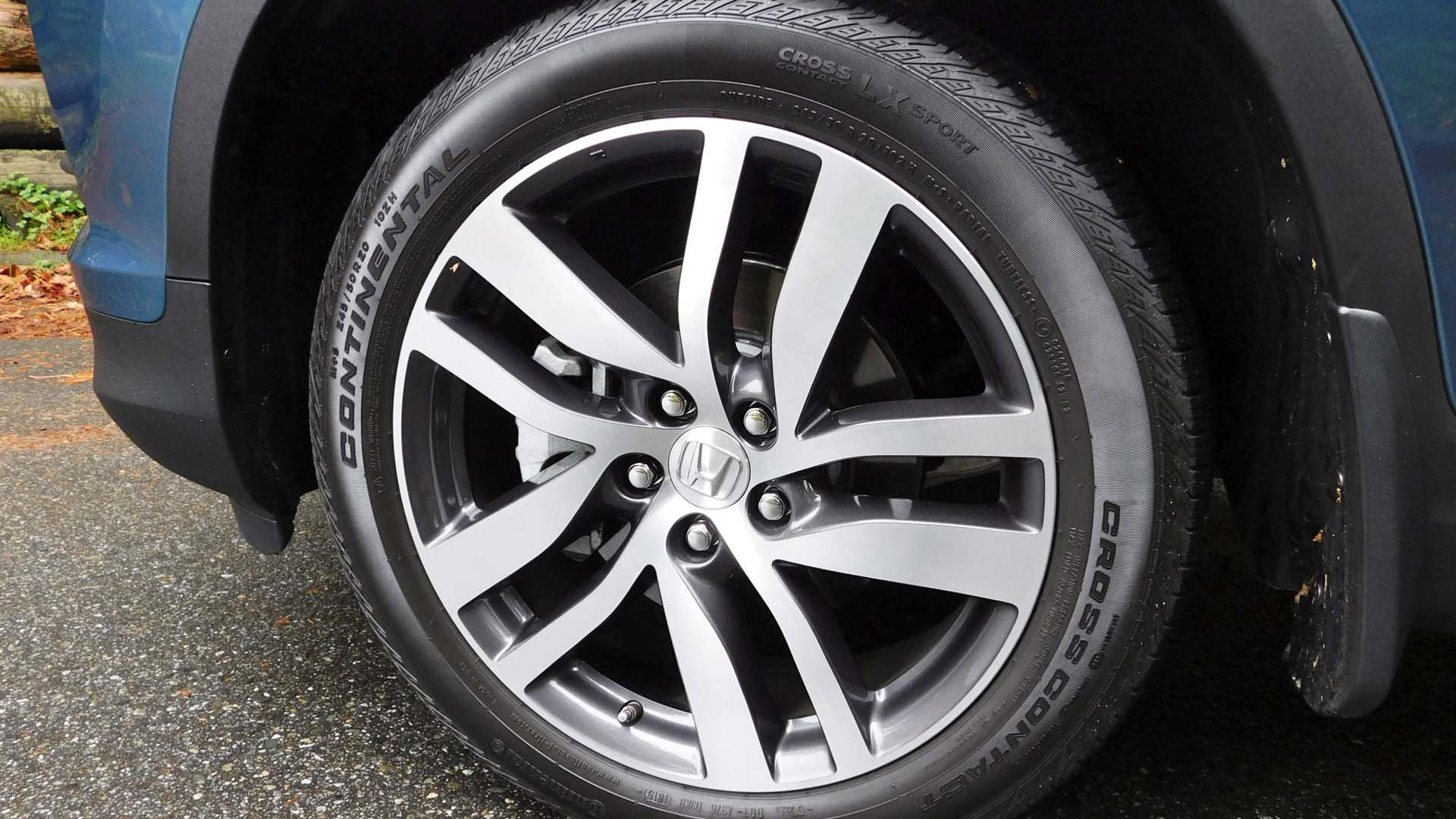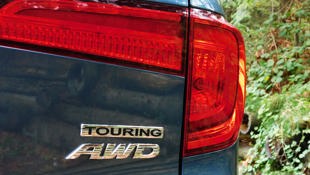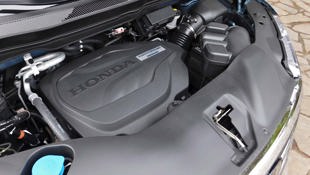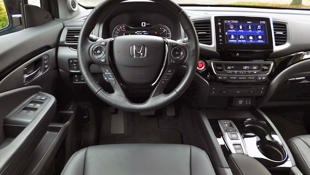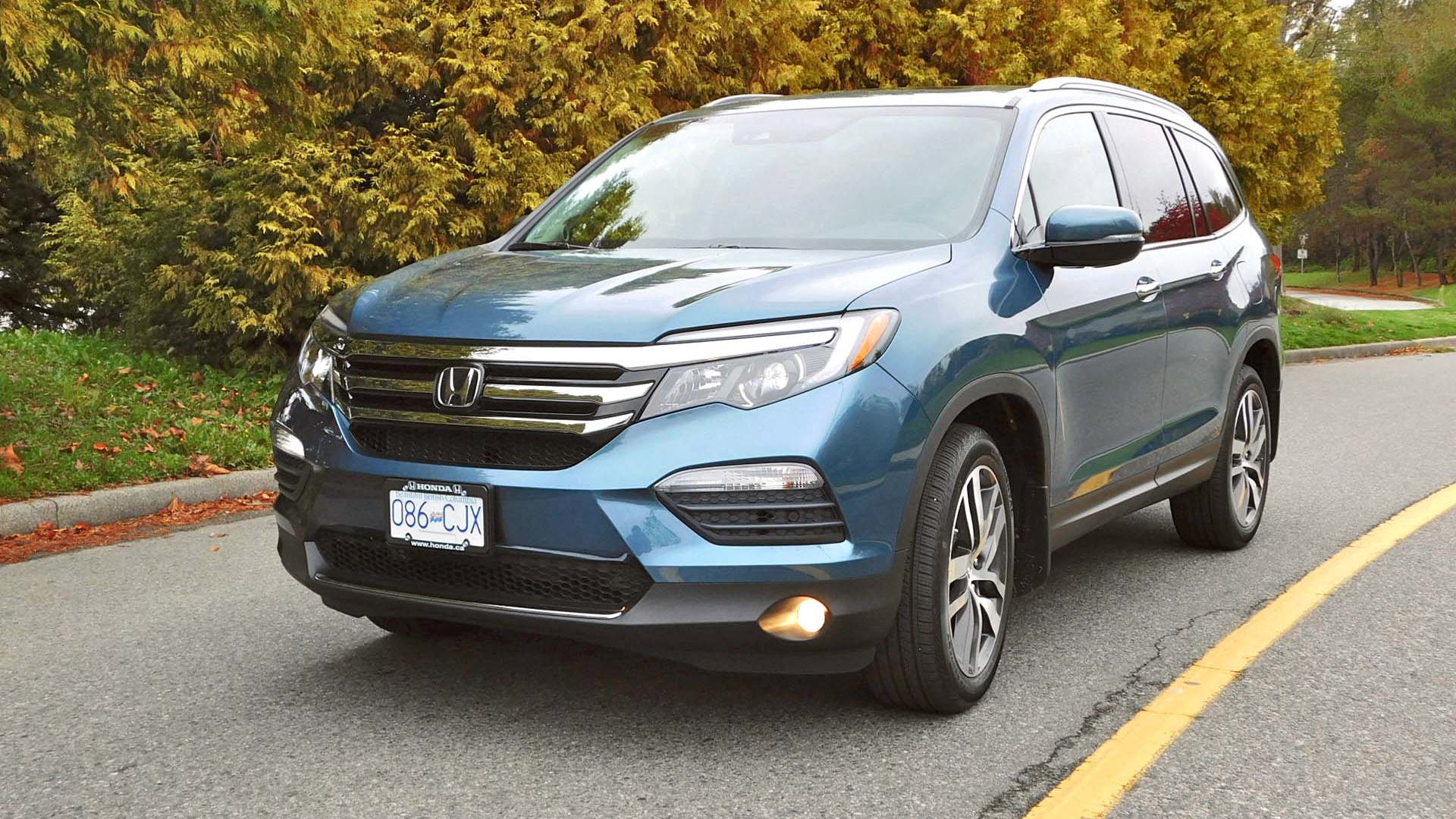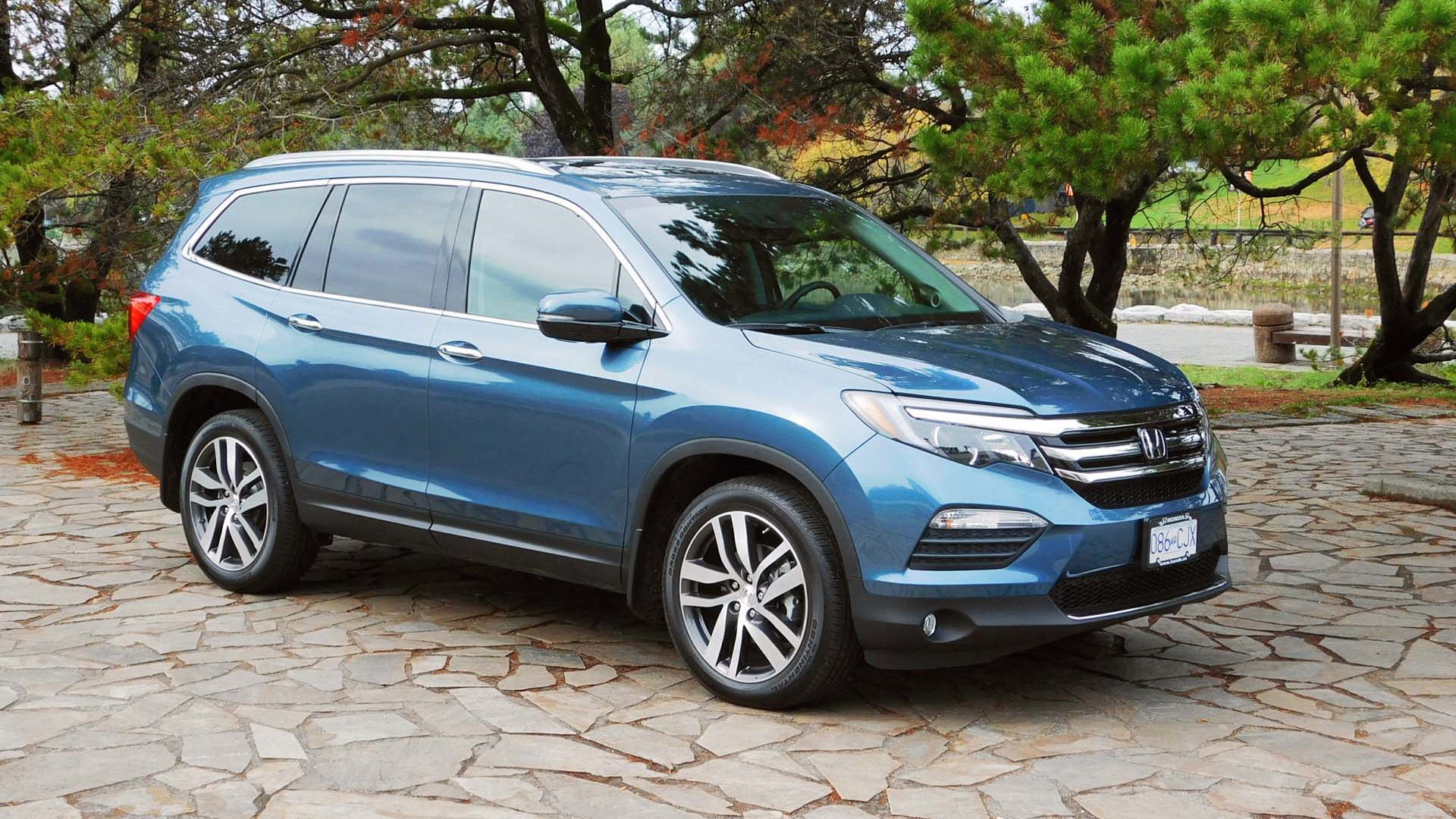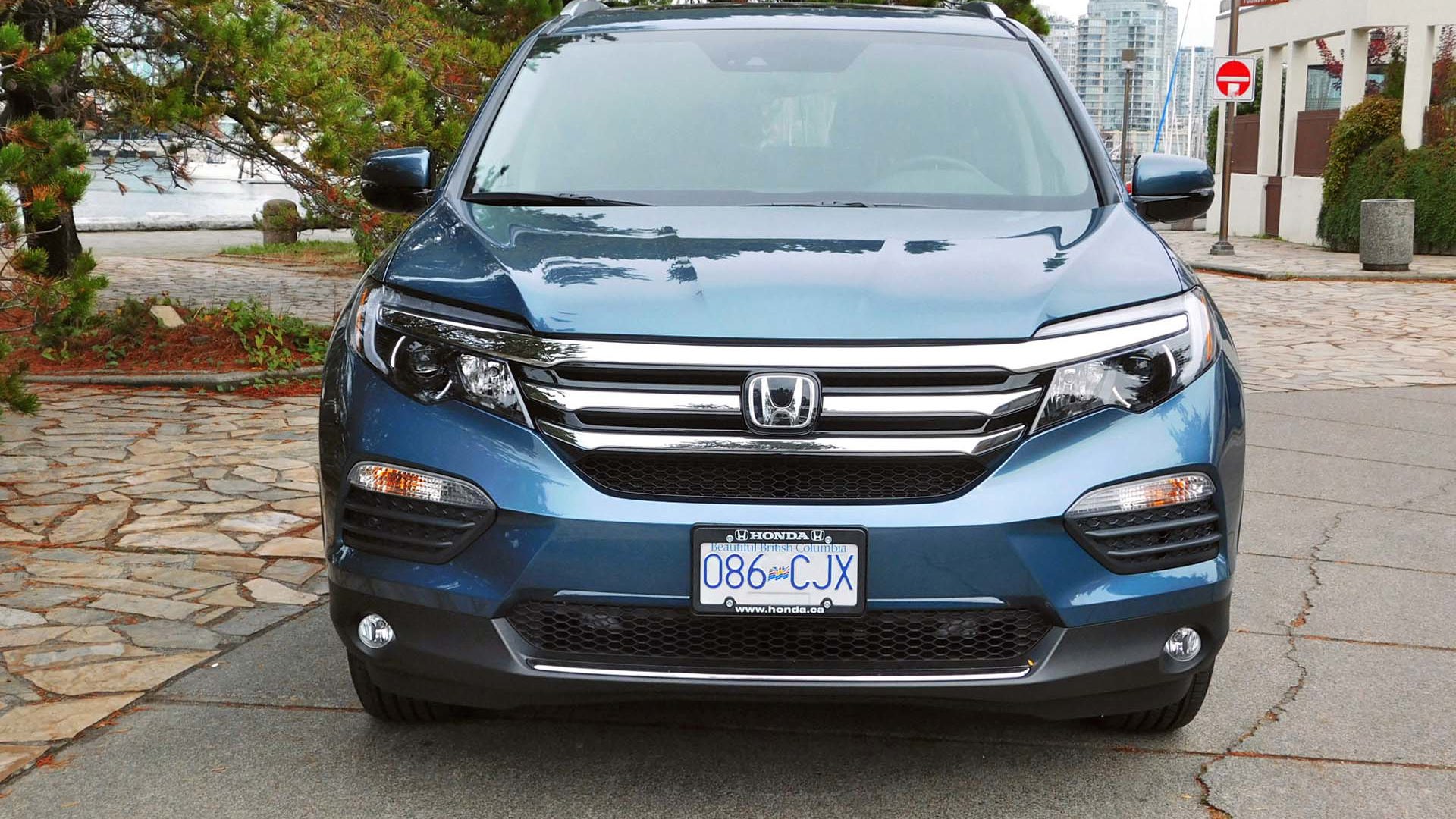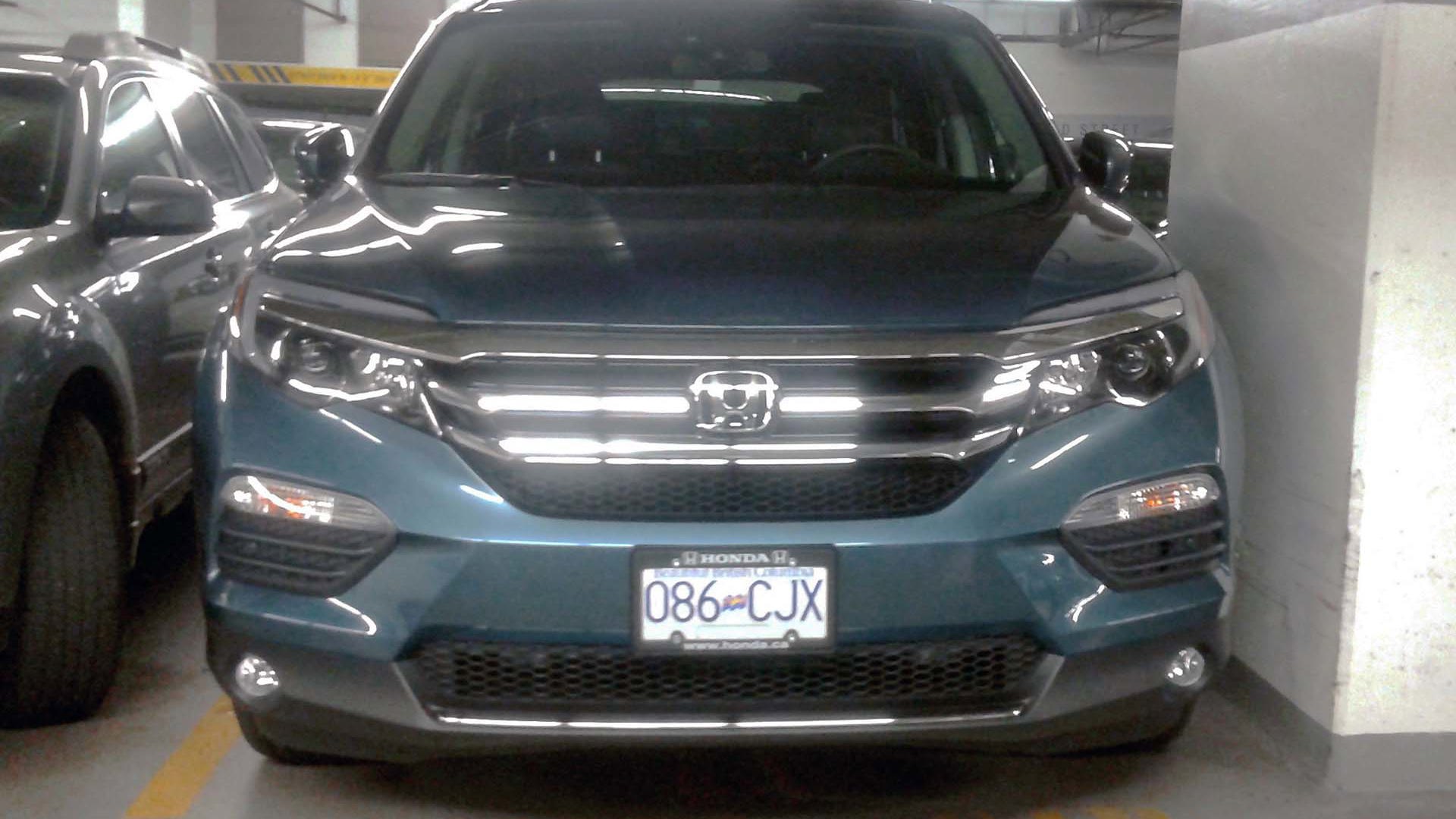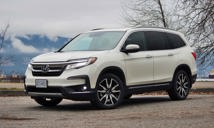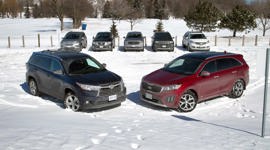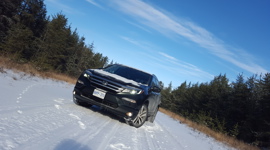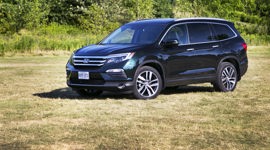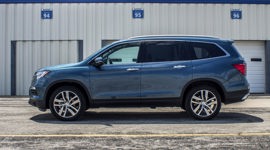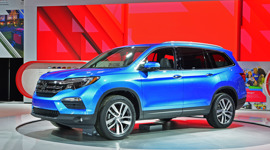 AutoTrader SCORE
AutoTrader SCORE
-
INTERIOR9/10
-
EXTERIOR STYLING8/10
-
FUEL ECONOMY7/10
-
PERFORMANCE8/10
-
COMFORT9/10
Honda's formula for its Pilot was never far off the mark, but somehow the boxy-looking and oh-so-functional SUV failed to find any real traction among buyers of mid-size, three-row SUVs. In the family-hauler shootout the Pilot, which sold 6,113 units in 2014, simply wasn't in the same league as Kia's Sorento (13,982 sold) or Ford's Explorer (12,677 sold), and it lagged well behind the Toyota Highlander (9,749 sold) and Nissan Pathfinder (9,688 sold). You might think that Honda could take some solace in besting the Hyundai Santa Fe XL (4,894 sold) except Hyundai gleefully claimed the top of the mid-size SUV sales heap in Canada with its two-row, five-passenger Santa Fe Sport (27,580 sold).
The neighbours will approve.
For 2016 Honda set out to remedy the situation with an ambitious and comprehensive third-generation remake that drew directly from customer input in order to address the outgoing model's greatest weaknesses.
First and most obvious is the styling. I was always in the minority in that I actually quite liked the boxy styling of the previous-gen Pilot, but it must be admitted that the look was a bit of out-of-place – the Pilot is no off-roading, terrain mauling Land Rover, and it seems the folks shopping in this market would rather park something with more of an air of urban sophistication in their driveways. So Honda has redrawn the Pilot to look like a big grown up CR-V (or like a Hyundai Santa Fe for that matter) and it pulls off the new look entirely successfully, appearing decently handsome and upscale without standing out much or looking garish. The neighbours will approve.
While the folks at Honda were smoothing out the styling they also stretched the Pilot a little – it's 90 mm longer than the outgoing model and rides on a 45 mm longer wheelbase, with 35 mm more rear cargo area and 25 mm more length in the passenger compartment. Thanks to the increased use of high-strength steel it manages to accomplish this without gaining any weight. Indeed, in equivalent trim it weighs about 110 kg less than the previous-gen Pilot and and has 25 percent more structural rigidity for an improved ride. Perhaps best of all from the driver's point of view, the newly smoothed styling doesn't come at the cost of obstructive D-pillars (you can see out the back quite well, actually) and the A-pillars have been significantly slimmed down from the previous version (which had rather thick A-pillars) making it much easier to see pedestrians approaching from the corner of intersections, for example. Bravo Honda!
Bravo also for the Pilot's safety ratings: It gets good scores across the board in IIHS crash tests (including the challenging new small overlap front crash) and earns a Top Safety Pick+ award thanks to the full suite of available safety features (in the Touring trim these include adaptive cruise control, lane-keeping assist, road departure warning, forward collision warning, blind spot detection and rear cross traffic alert).
Inside, the new Pilot feels far more upscale and luxurious than the second-generation model, which was swathed in an unfortunate sea of what I charitably called "family-friendly rigid plastic" when I drove a 2013 model. The new Pilot replaces the former's slab like plastic dash with an up-to-date looking layout that features a padded stitched dash pad and door uppers (front doors only), with piano black and brushed metal-look trim splashed about here and there. Admittedly the piano black might be a little 2010-ish (and it shows up dust and fingerprints like nobody's business) but the overall look is now far less "Wash it out with a garden hose" and far more "Ah, Jeeves, bring the Pilot around, would you."
From a practical viewpoint, the second and third row seats fold up and deploy quickly and easily, which you'll appreciate if, like me, you've ever wrenched your back trying to manipulate the seats in less well-executed SUVs and minivans. There's plenty of room to stretch out in the first and second row seats (the second row has three-across seating in lower trim models and twin captains chairs in the higher-trim Touring model, which also gets leather upholstery). Even the third row is reasonably adult-size once you clamber through the slightly narrow access space. Cargo space is 524 L with all the seats up, 1,583 L with the third row folded, and 3,092 L with all the seats folded, which creates a large, flat loading area. Behind the third-row seats there's a handy hidden stowage area that can also open up to increase the cargo capacity.
An enormous console bin, plenty of door cubbies, and two big cupholders take care of stowage requirements for the driver and front-seat passenger, who get heated and cooled seats in the Touring trim, and a heated steering wheel for the driver. Second-row passengers got three cupholders each in my Touring trim test car, as well as seat heaters, separate climate controls, an overhead DVD/gaming monitor with HDMI and RCA inputs, and a big panoramic roof that proved very popular with my family.
An eight-inch colour touchscreen takes care of infotainment functions, although personally I'd prefer more redundant hardware controls (specifically for things like volume and tuning). The premium audio system in the Touring trim has good power, decent clarity, and excellent presence in all seats, and the navigation graphics are excellent.
The infotainment interface is reasonably good, but I did find myself getting lost within the submenus on occasion (my wife gets quite irate when I drive along squinting and poking at the infotainment screen, and the Pilot elicited more than its share of "Just drive and let me do that!" moments). I'm also still not sold on the buttons-and-slider gear shift control that comes in the Touring trim. Again, it's something I'm sure you'd get used to with time, but it seems a little gimmicky and, fool that I am, I kept pressing neutral when I wanted reverse. From a purely practical point of view, too, the buttons seem alarmingly exposed to having sugary drinks spilled on them: I'm not sure if it was sugary drinks or a misalignment during assembly, but my test car had a sticking Intelligent Traction Management mode selection switch, making it difficult to test the various drive modes (all-wheel drive Pilots get a sophisticated torque management system that can split torque not only front to-to-rear, with up to 70 percent of power going to the back wheels, but also side to side across the rear axle. There are traction modes for Normal driving, Snow, Mud and Sand.)
Under the hood, the 2016 Pilot has a 3.5L i-VTEC V6 engine that features direct injection and engine stop/start technology. It produces more horsepower than the previous-generation mill (280 hp and 262 lb-ft of torque, a 30 hp increase) while returning better economy. Official ratings with the available nine-speed are 12.4 / 9.3 L/100km (city/highway) and my test car achieved an average of 12.9 L/100 in mixed driving, a genuine improvement compared to the 14+ L/100km average I managed in the previous-generation Pilot. The engine runs on regular gas, unlike the slightly more powerfully tuned version version seen in the Acura MDX.
Most trim levels of the Pilot get a six-speed automatic transmission (replacing the previous five-speed), while Touring trim models get an Acura-sourced nine-speed with paddle shifters. That said, the Pilot isn't really the type of vehicle that inspires you to fling it into around twisting country roads, flicking up and down through the gears, so I pretty much ignored the paddle shifters except to determine that yup, when you click the paddles the transmission responds with an appropriate shift.
There's an EcoAssist mode for when you want to eke out the best possible economy, but all it really does is dull the throttle response off the line to the point that the car feels downright lethargic. Even my wife, who's generally a pretty sedate driver, found it just too much and shut it off. The engine stop/start technology on the other hand works very well - it's seamless and unobtrusive, and appears to react to differential pressure on the brake pedal so that you can start or stop the engine as desired.
I did note some rough shifting from the transmission when driving in the city, but overall I had no real complaints. Acceleration is reasonably quick at about 7.5 seconds from 0-100km/h, and AWD versions of the Pilot can tow up to an impressive 2,268 kg (5,000 pounds).
Honda has reconfigured the Pilot's suspension as part of the third-generation makeover, and it now has amplitude-reactive dampers at all four corners, with a revised multilink setup in the rear and a reduced centre offset up front to eliminate steering wheel vibrations. On the highway, combined with the 2016 model's additional soundproofing, it's all quite sublime and the Pilot glides along with an impressively hushed ride. Around town the Touring trim's massive low-profile 245/50R20 tires and wheels exact their toll with a certain amount of thumpiness over sharp imperfections, but despite the rather firm road feel the Pilot is a bit floaty in corners (it's composed and confident, for sure, but a bit floaty).
The Pilot is also quite big. When we decided to drive downtown to watch a movie I initially suggested we take our own compact sedan, as I didn't relish the thought of trying to park the Pilot in the tight Cineplex parkade. My wife very reasonably countered that this would be cheating the test drive of real-world data, so in the end I got a chance to see if the Pilot would fit in one of the few available spots, which was marked "Small Car." It did, barely, and the electrically-folding mirrors even allowed us to exit the vehicle with a modicum of grace - see the cell-phone photo in the gallery.
All in all, from a family vehicle viewpoint the Honda Pilot checks all the boxes: it's comfortable, it has spacious seating for four or five, with room for either lots of luggage, or for three extra passengers while still leaving enough space for several carry-ons. Short of a minivan, there really nothing that can touch it in this regard.
Pricing starts at $37,341 (including the $1,851 destination fee) for the base LX, and runs up to $52,341 (destination in) for the Touring. It's a shame that some features such as the panoramic roof and nine-speed automatic are only available on the most expensive model, but even in lower trims the Pilot is nicely equipped and the key safety technologies are accounted for in all but the base LX trim. Final verdict: while the Pilot always represented an interesting option in the three-row mid-size SUV marketplace, the changes Honda has made for the third-generation model elevate it to the status of a must-see contender.
| Warranty: 3 years/60,000 km; 5 years/100,000 km powertrain; 5 years/unlimited distance corrosion perforation; 3 years/unlimited distance roadside assistance Competitors: |
| Model Tested | 2016 Honda Pilot Touring AWD |
|---|---|
| Base Price | $50,490 |
| A/C Tax | $100 |
| Destination Fee | $1,851 |
| Price as Tested | $52,441 |
|
Optional Equipment
None
|
|
